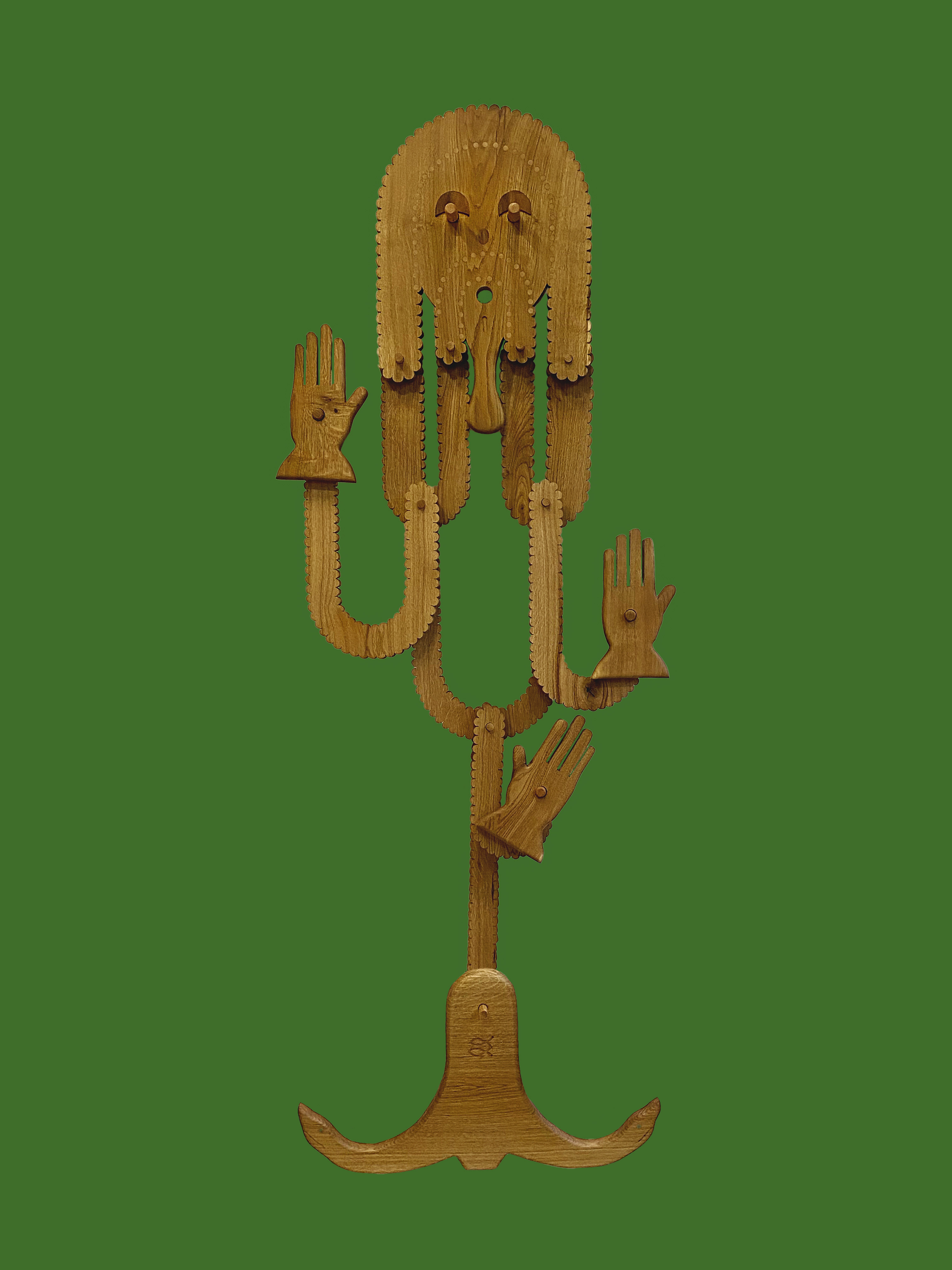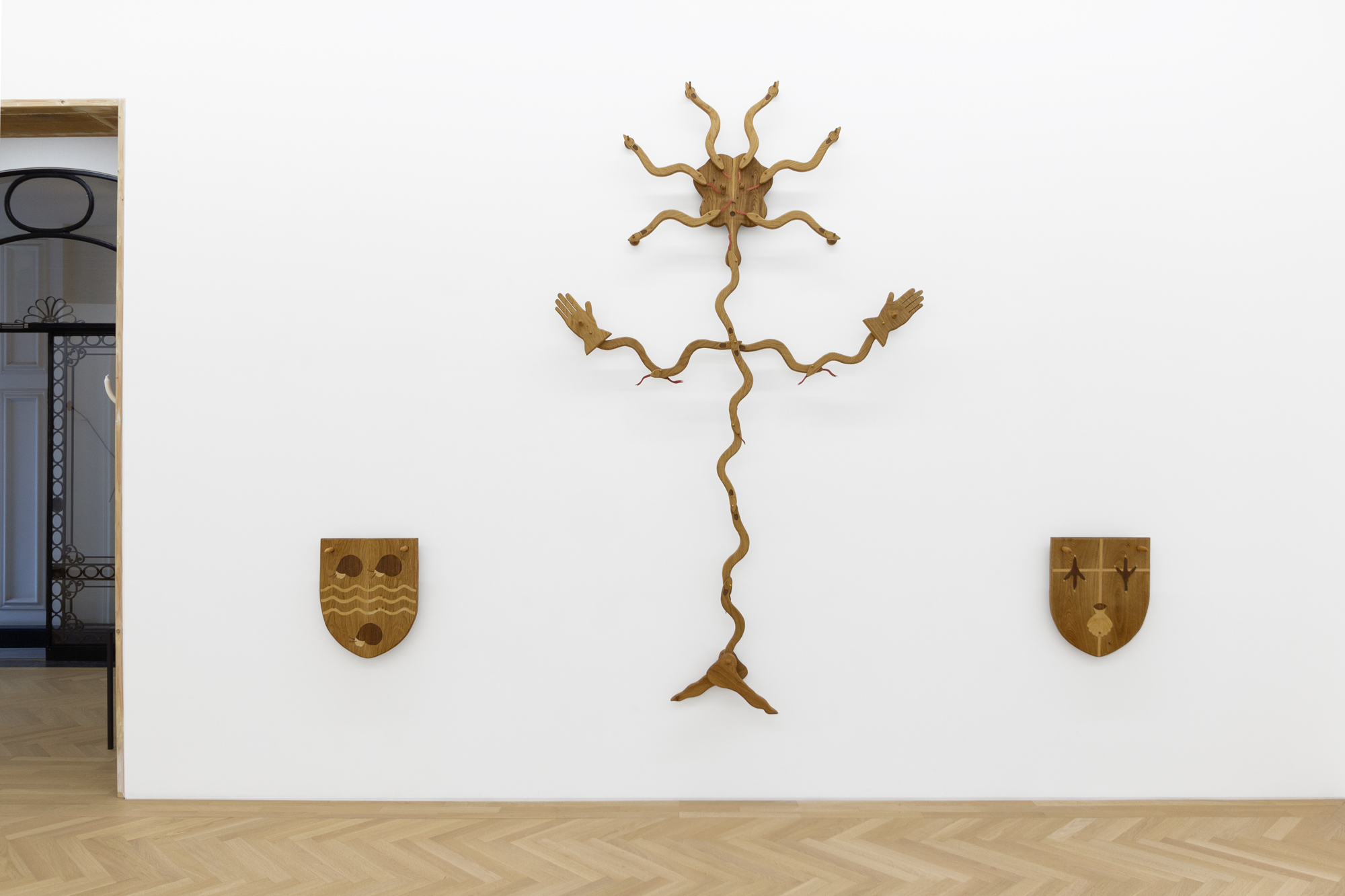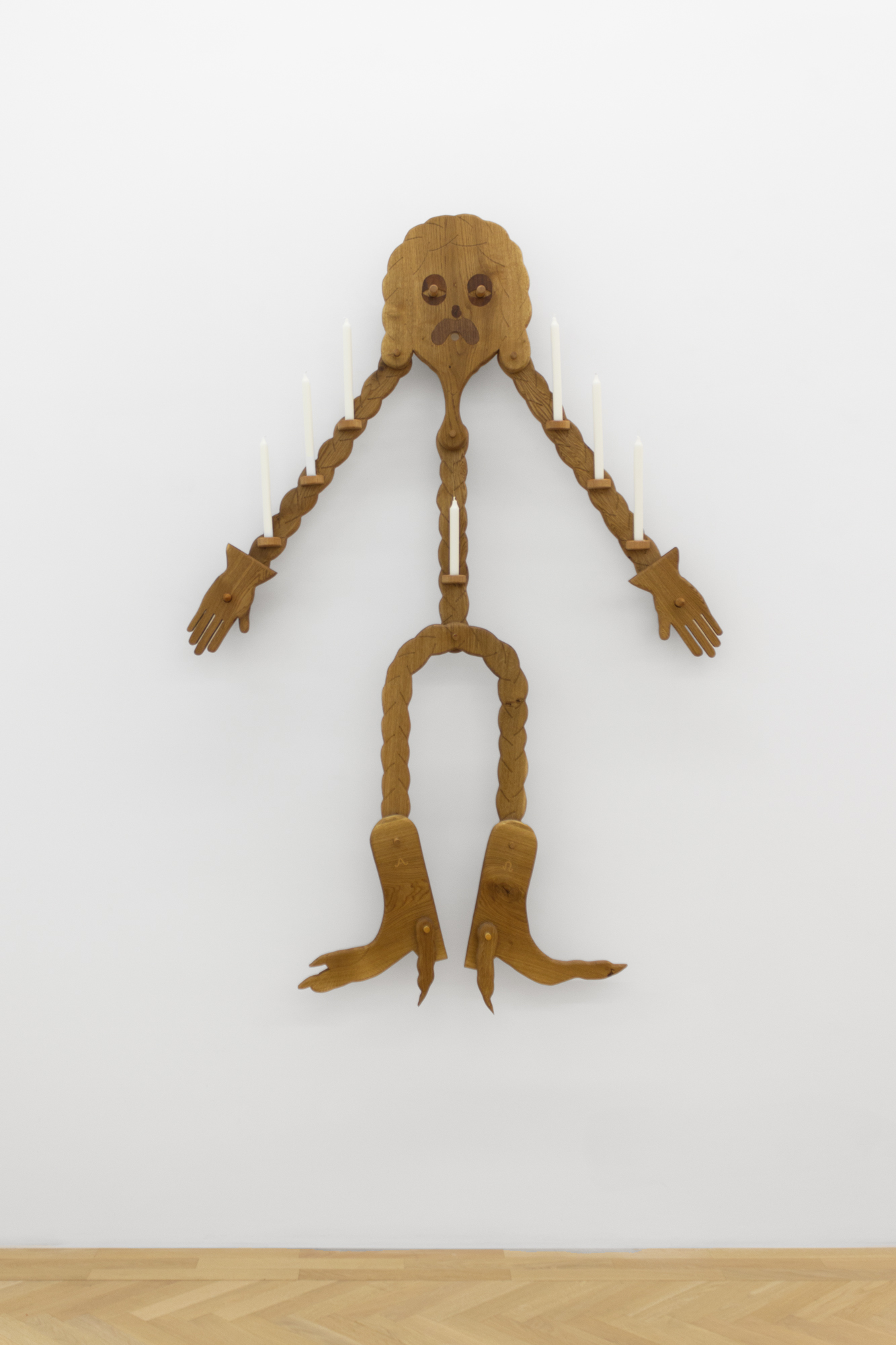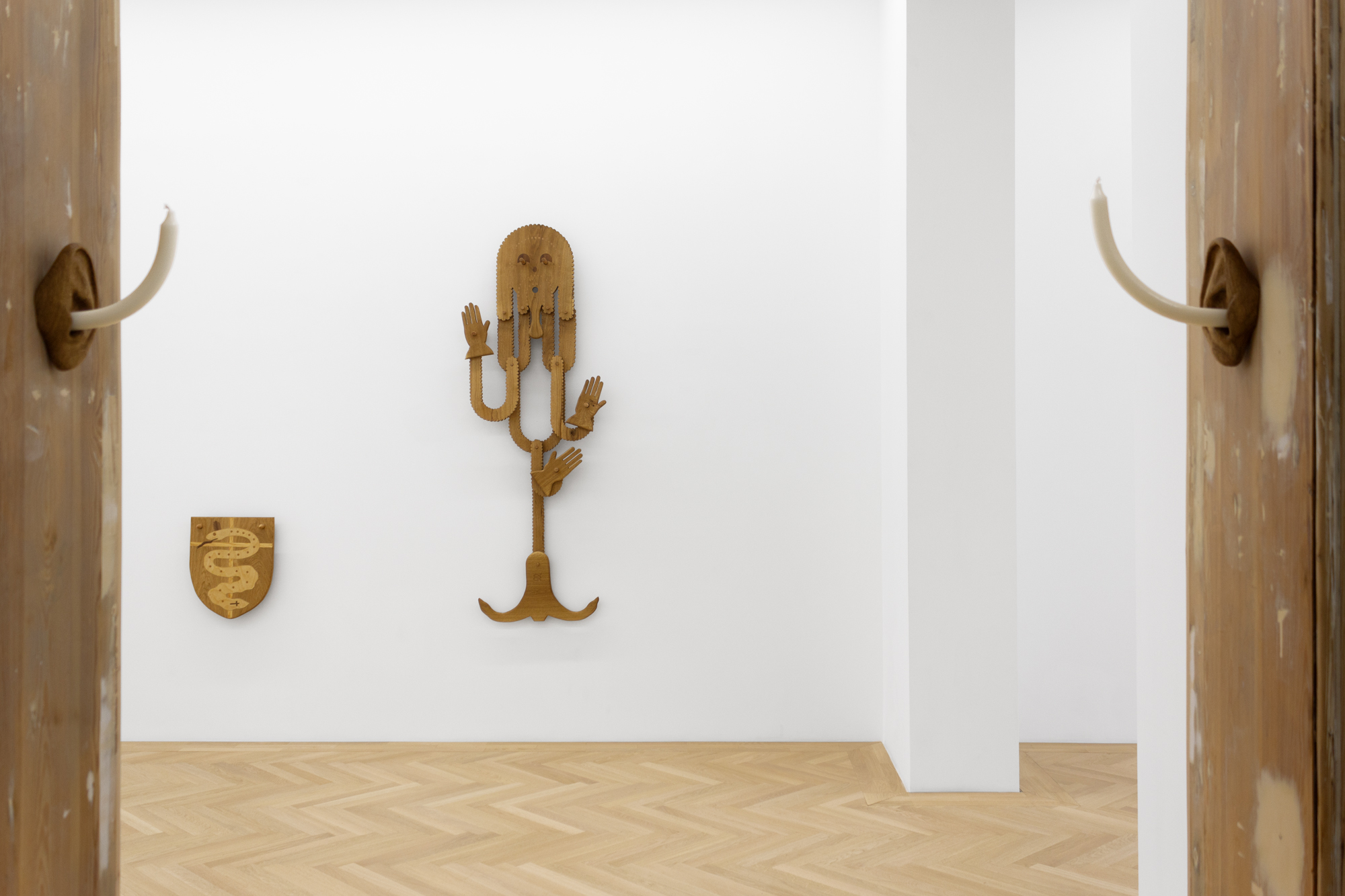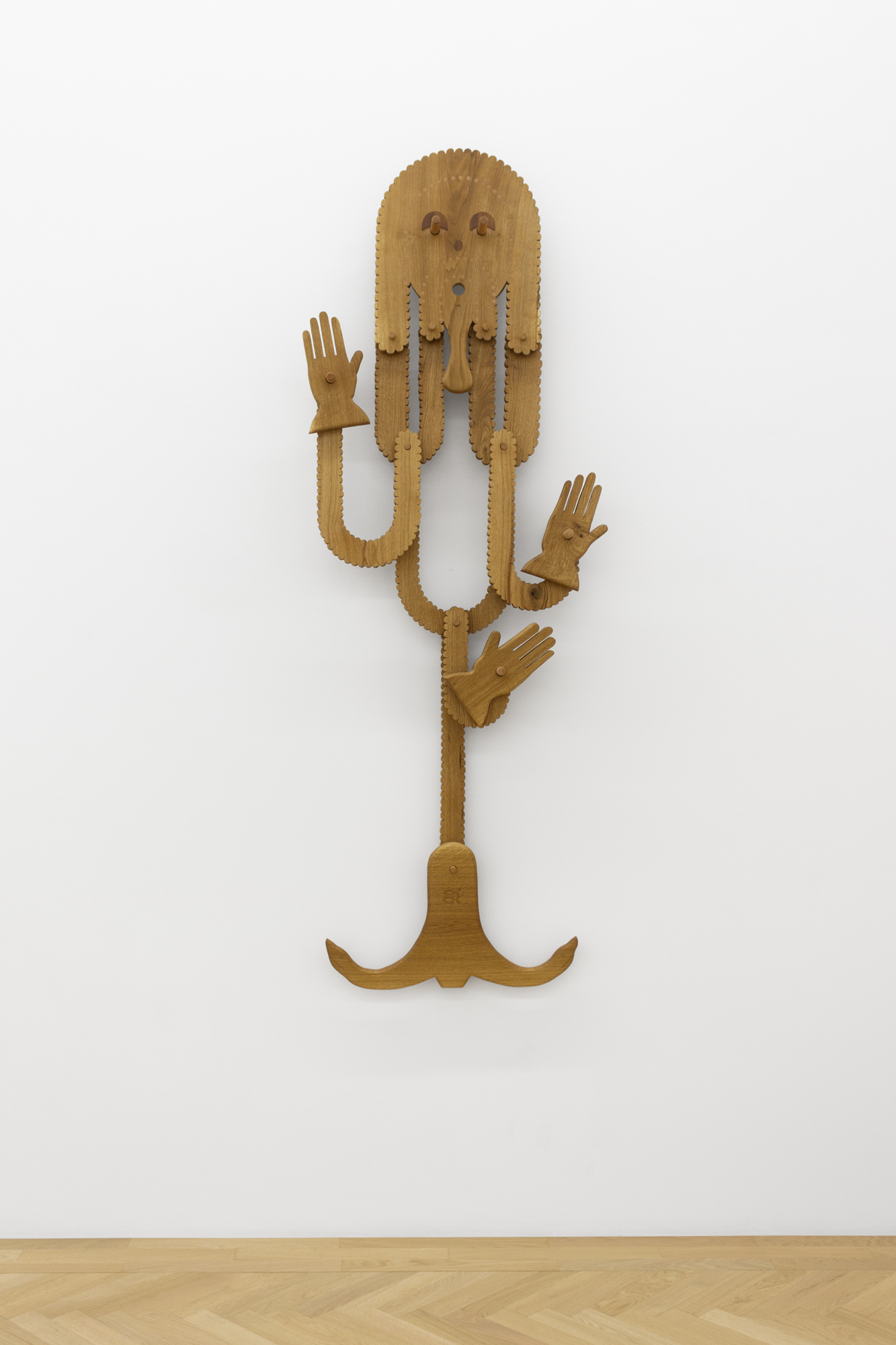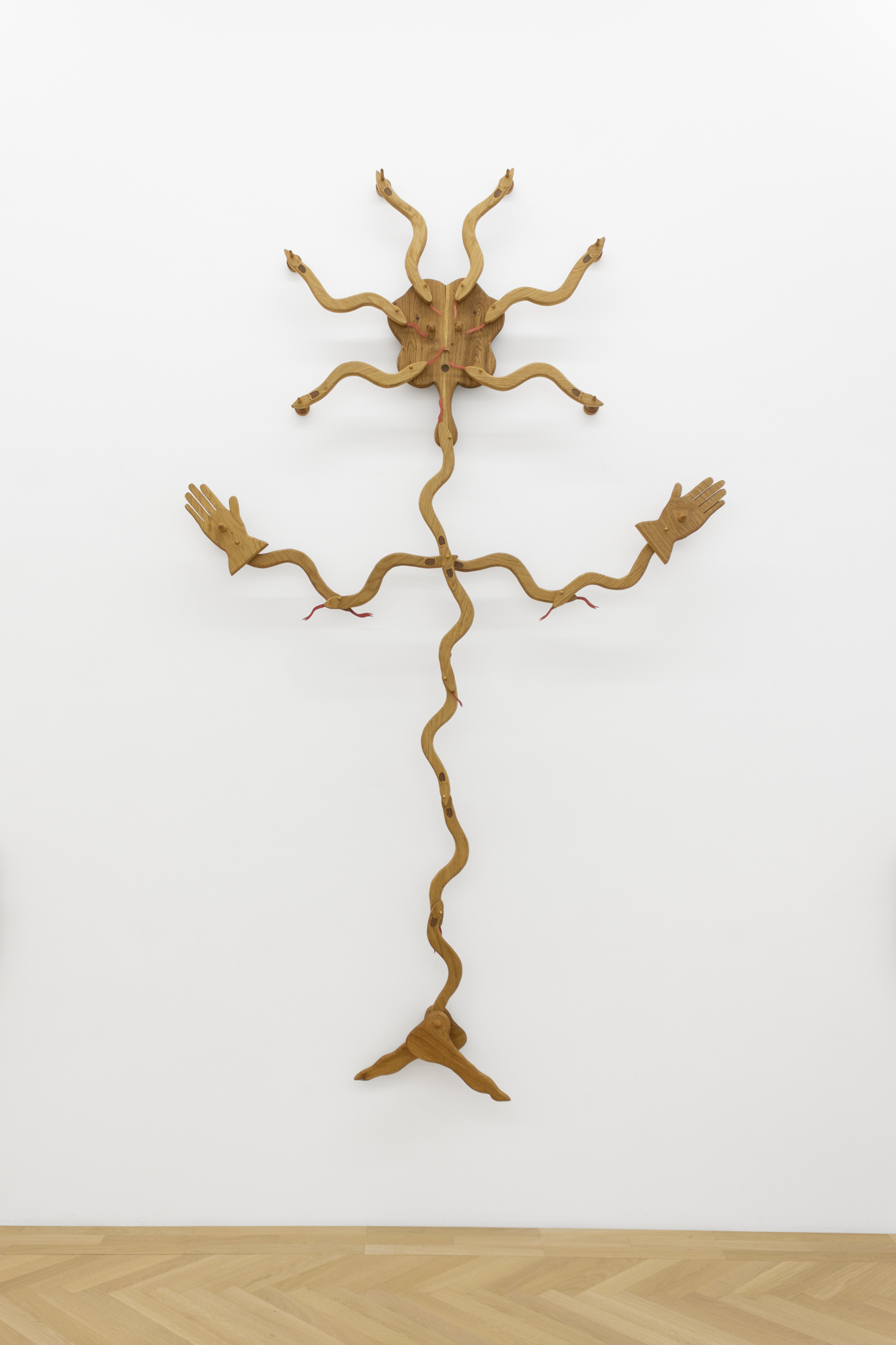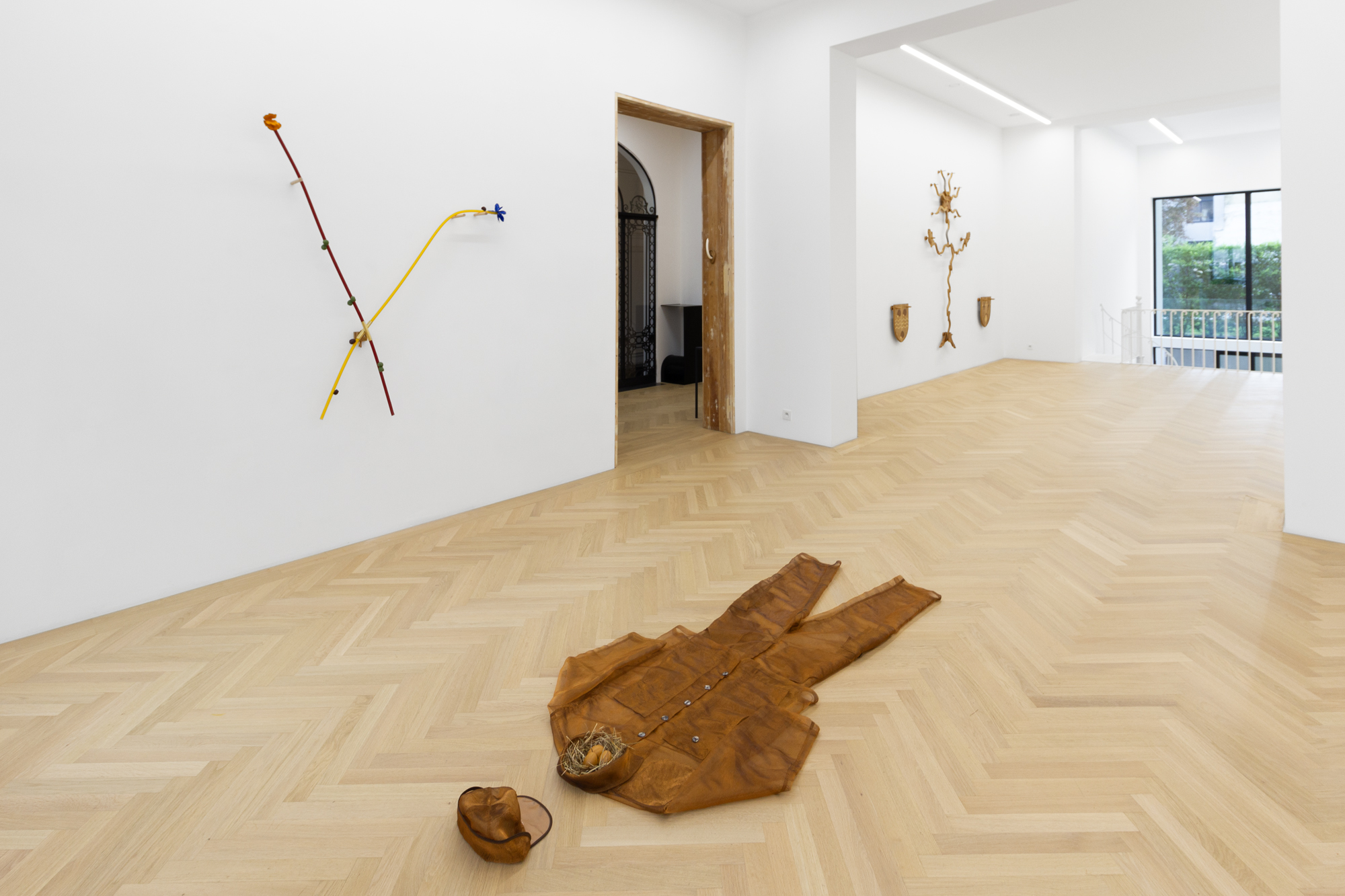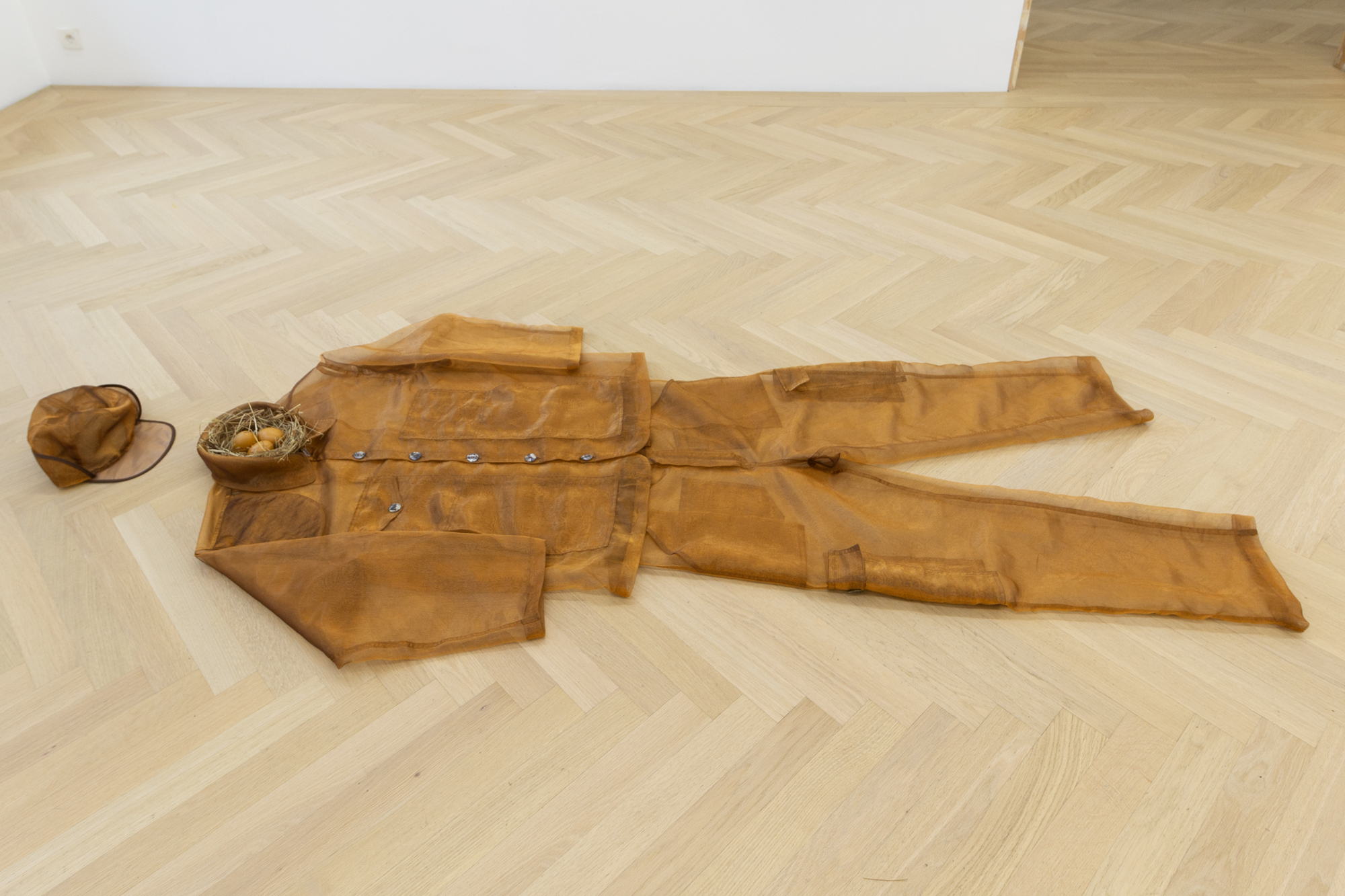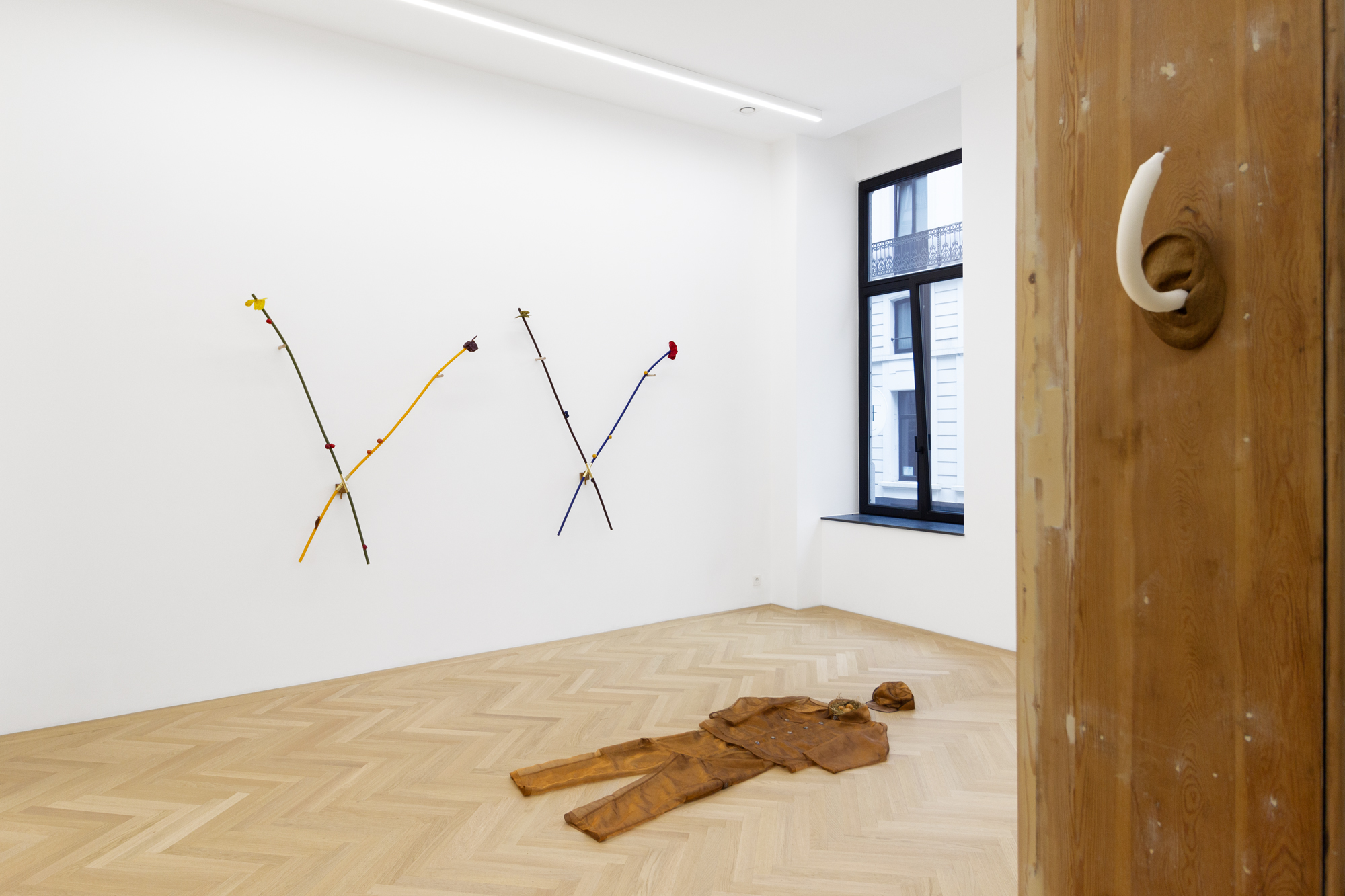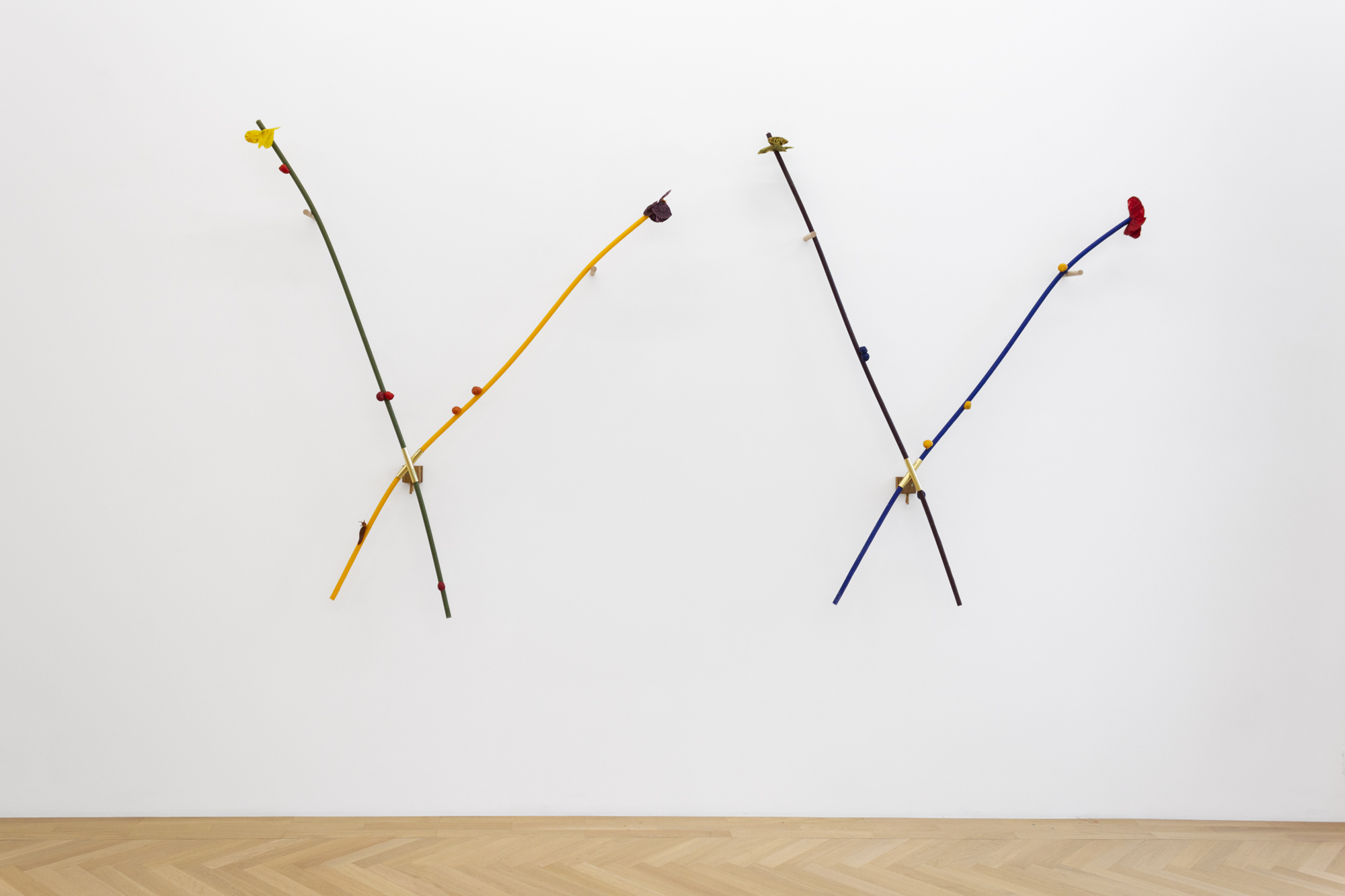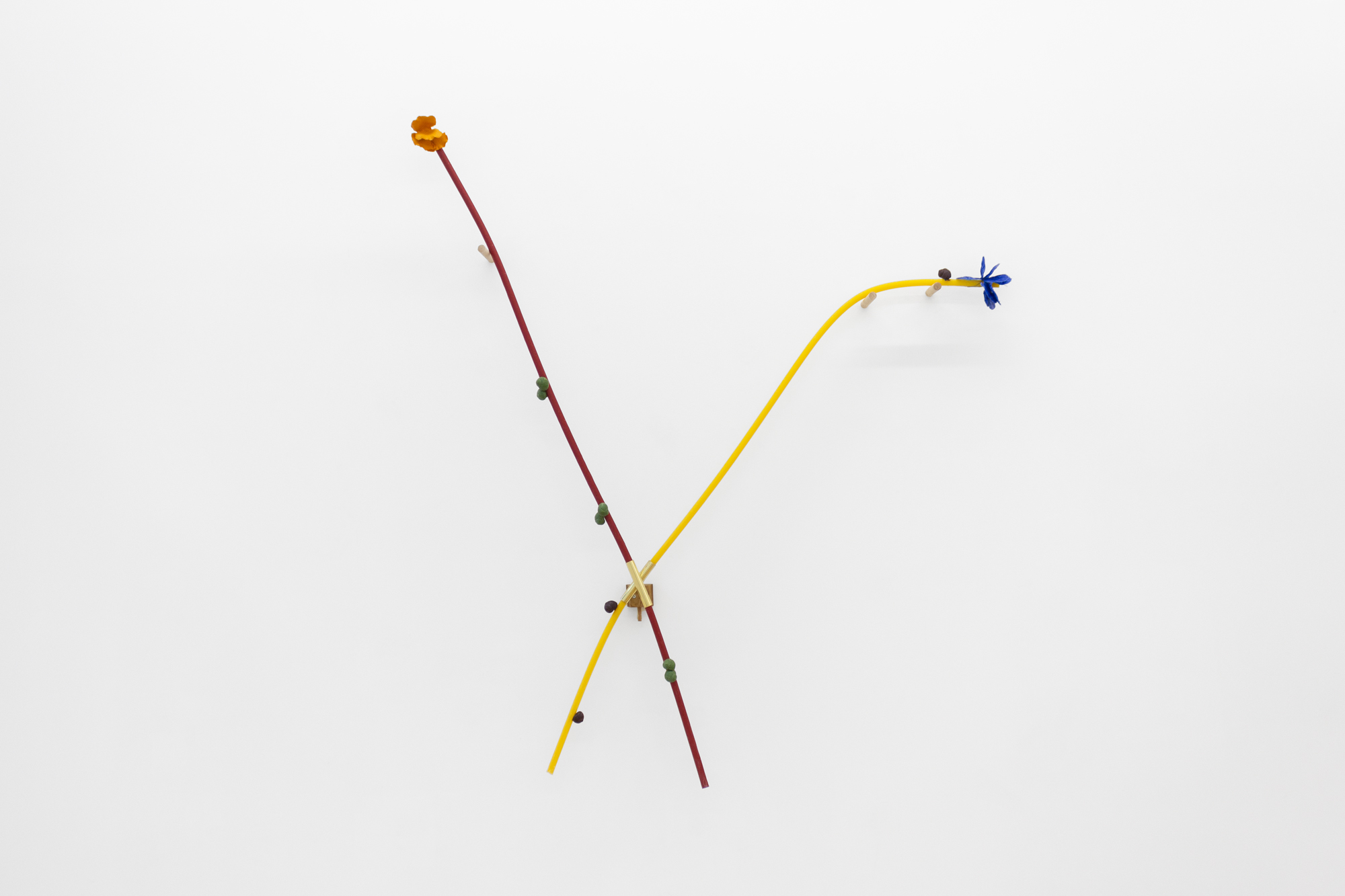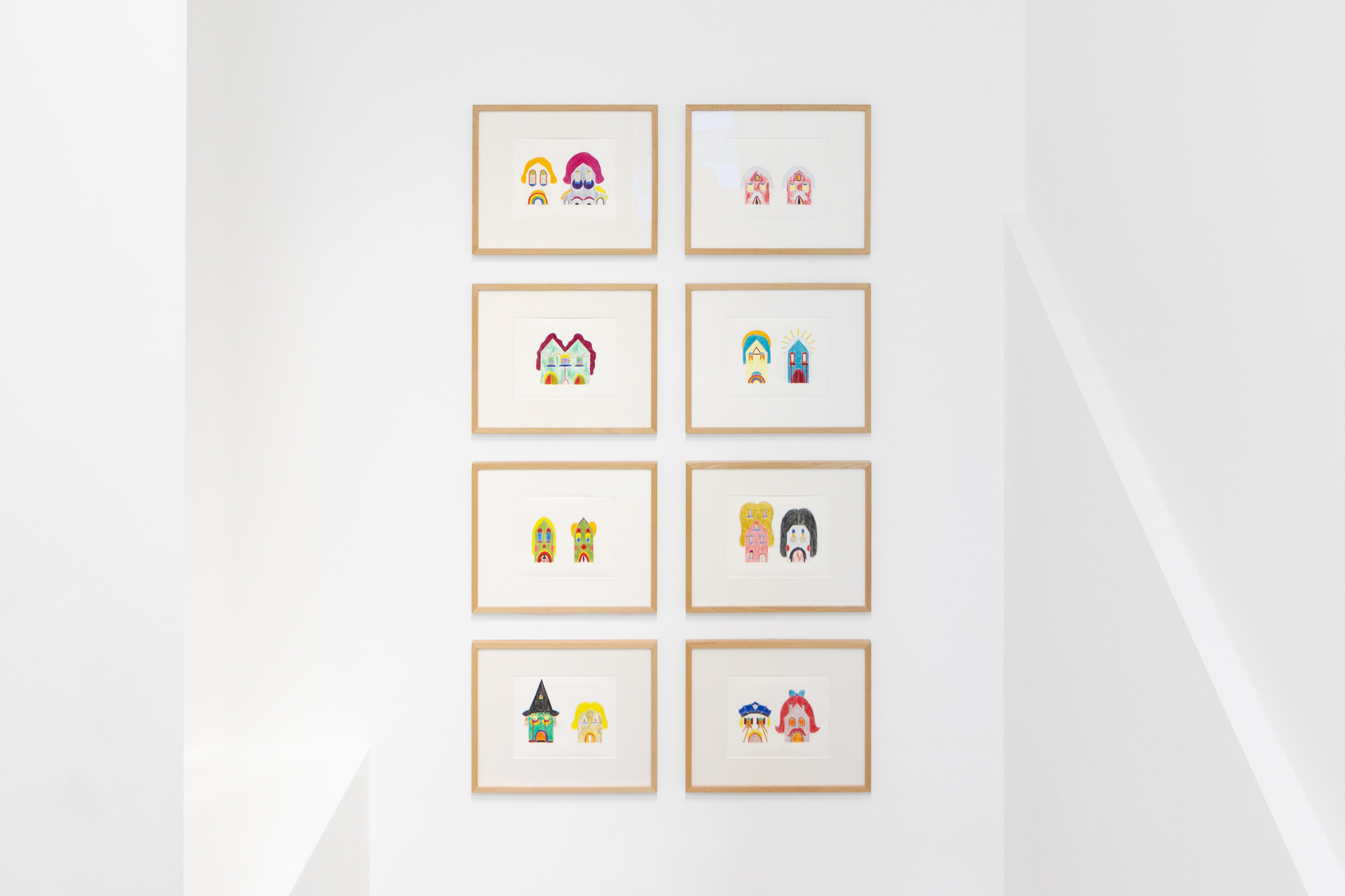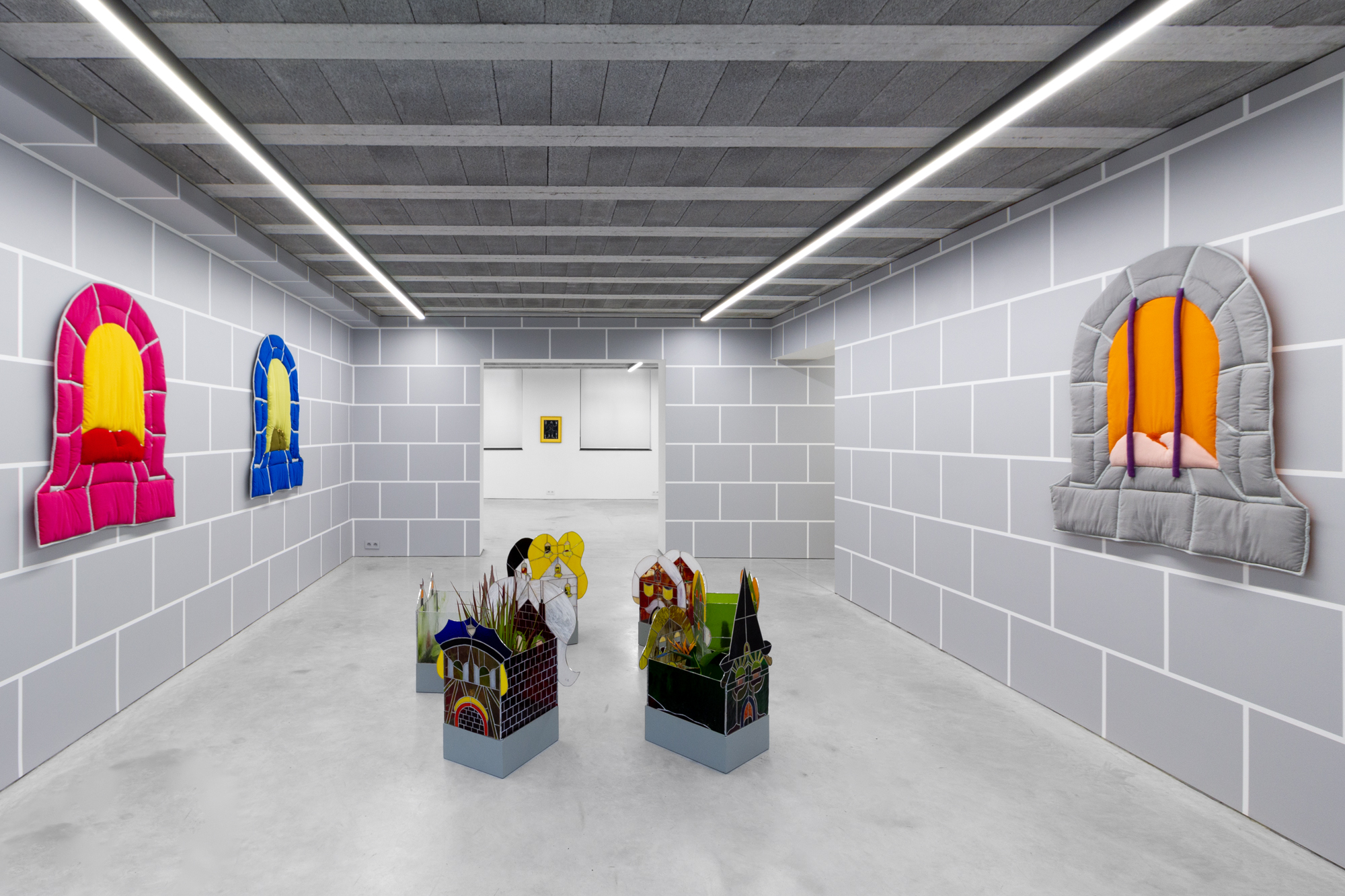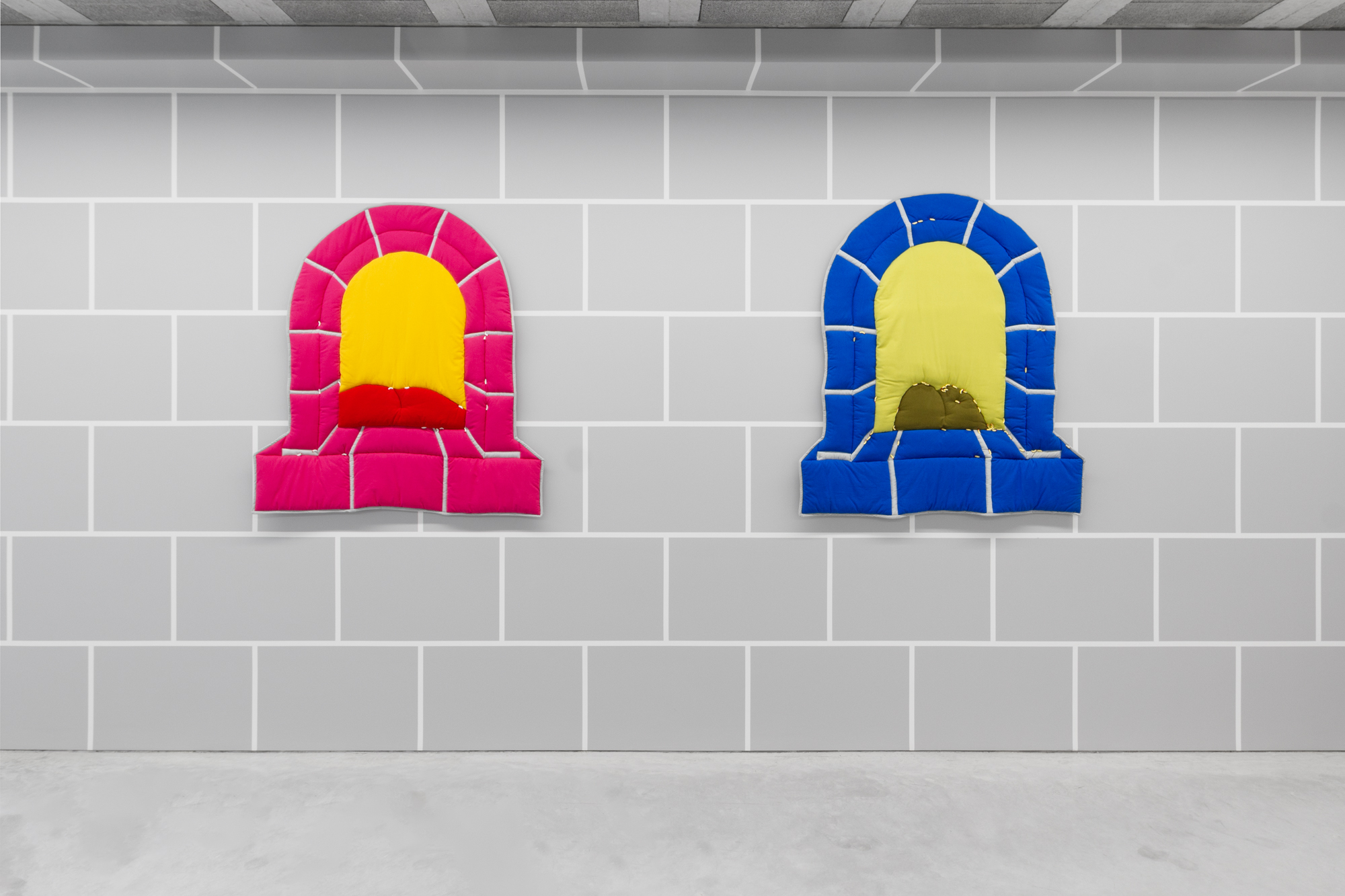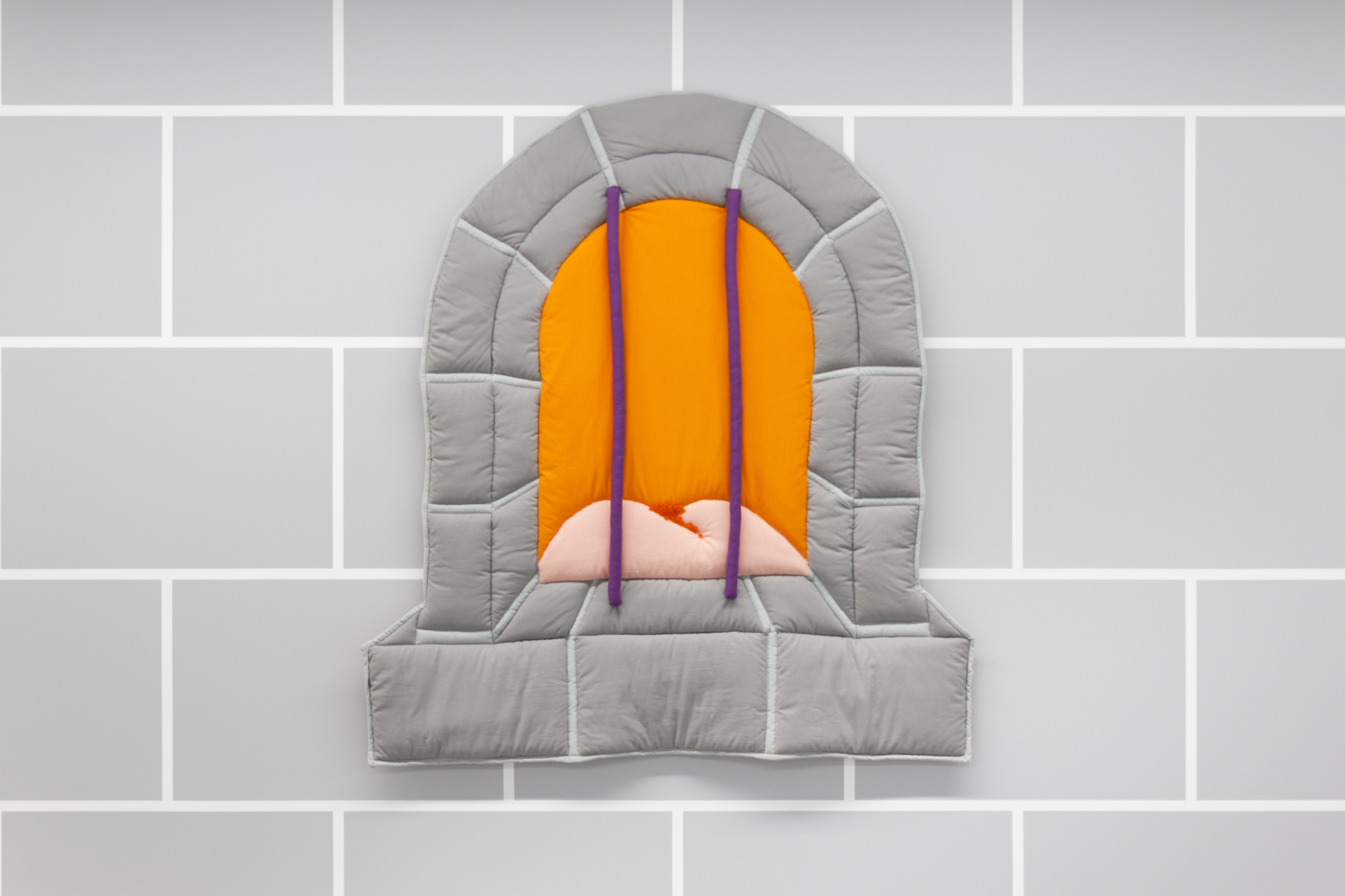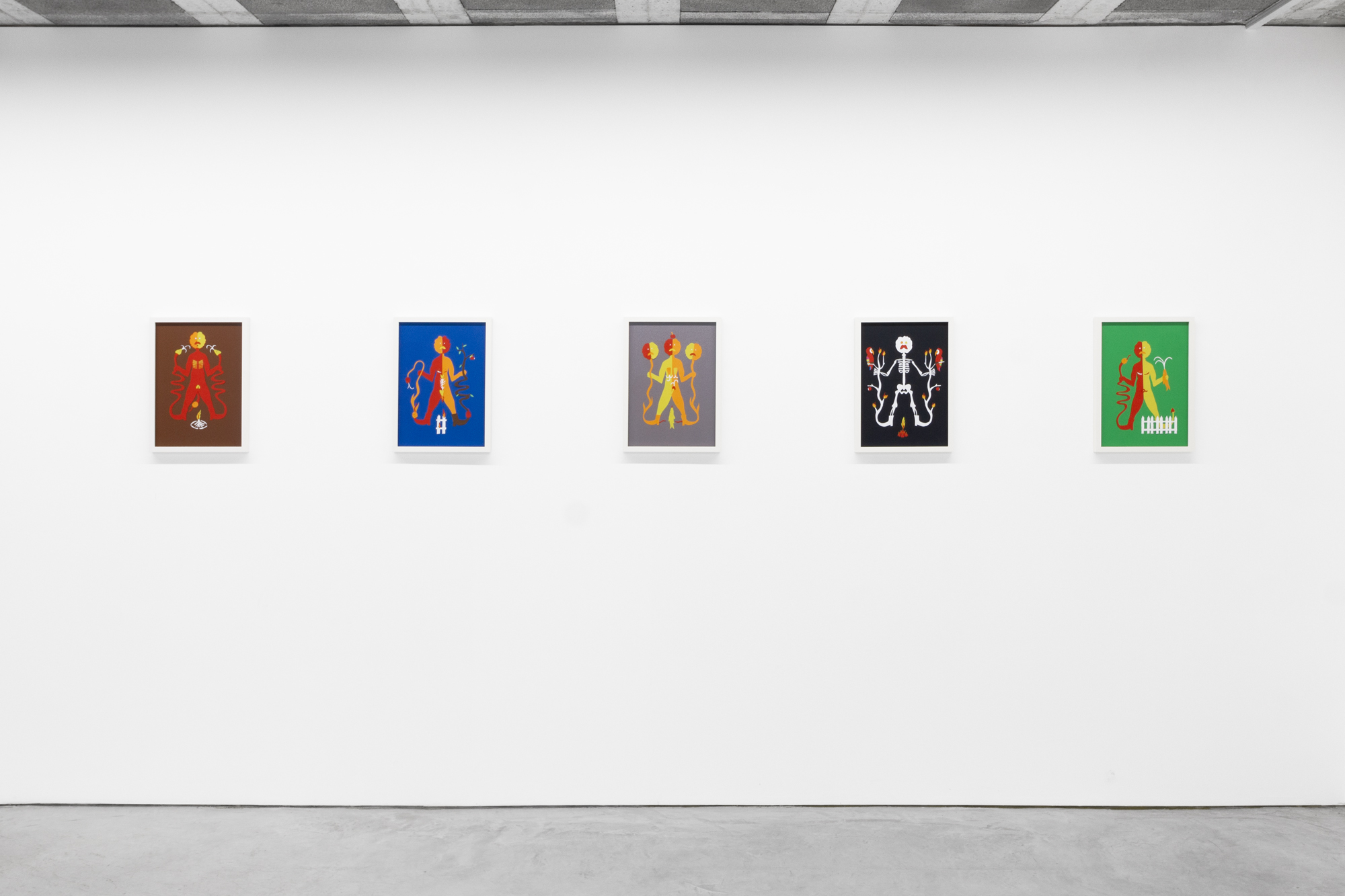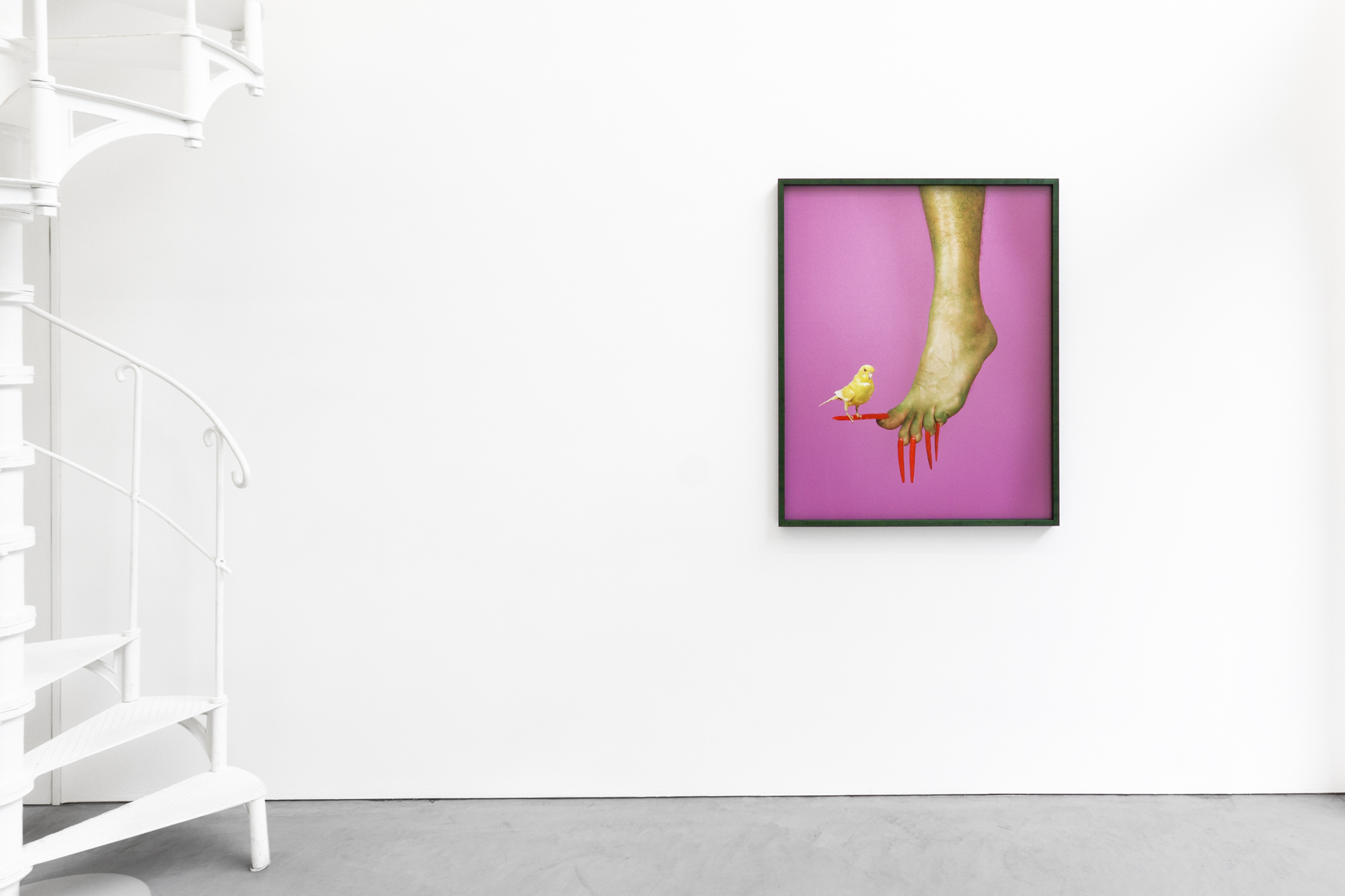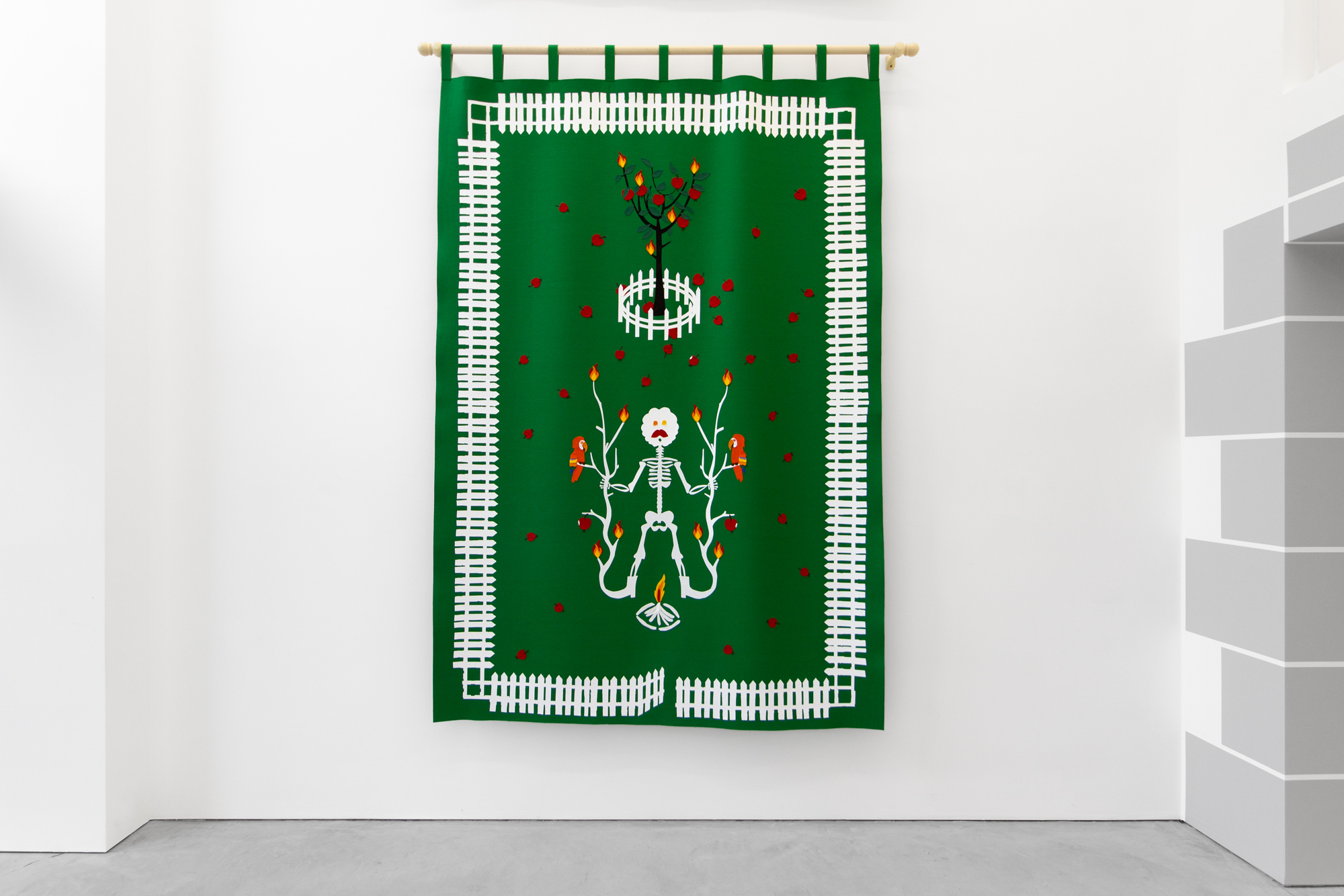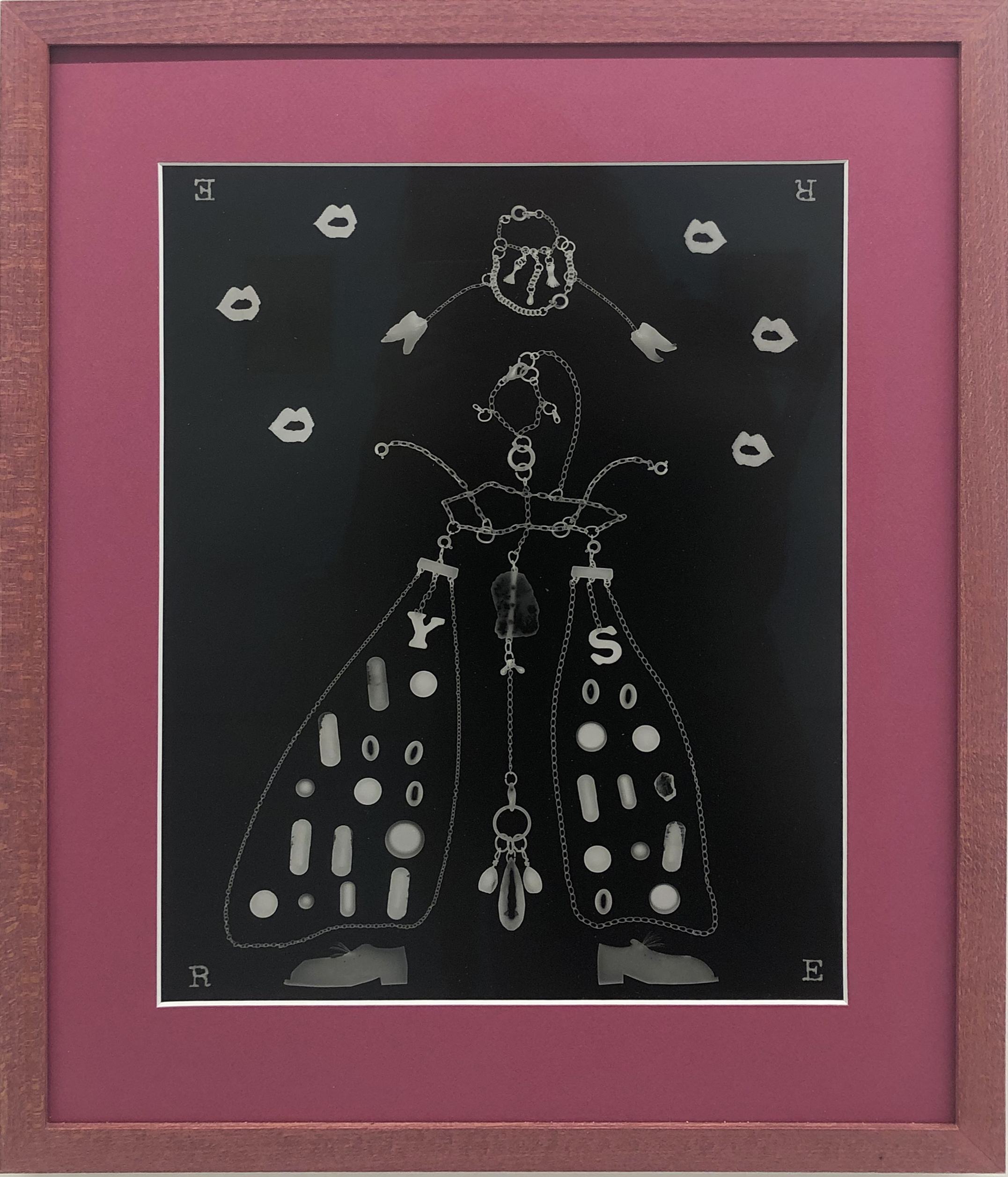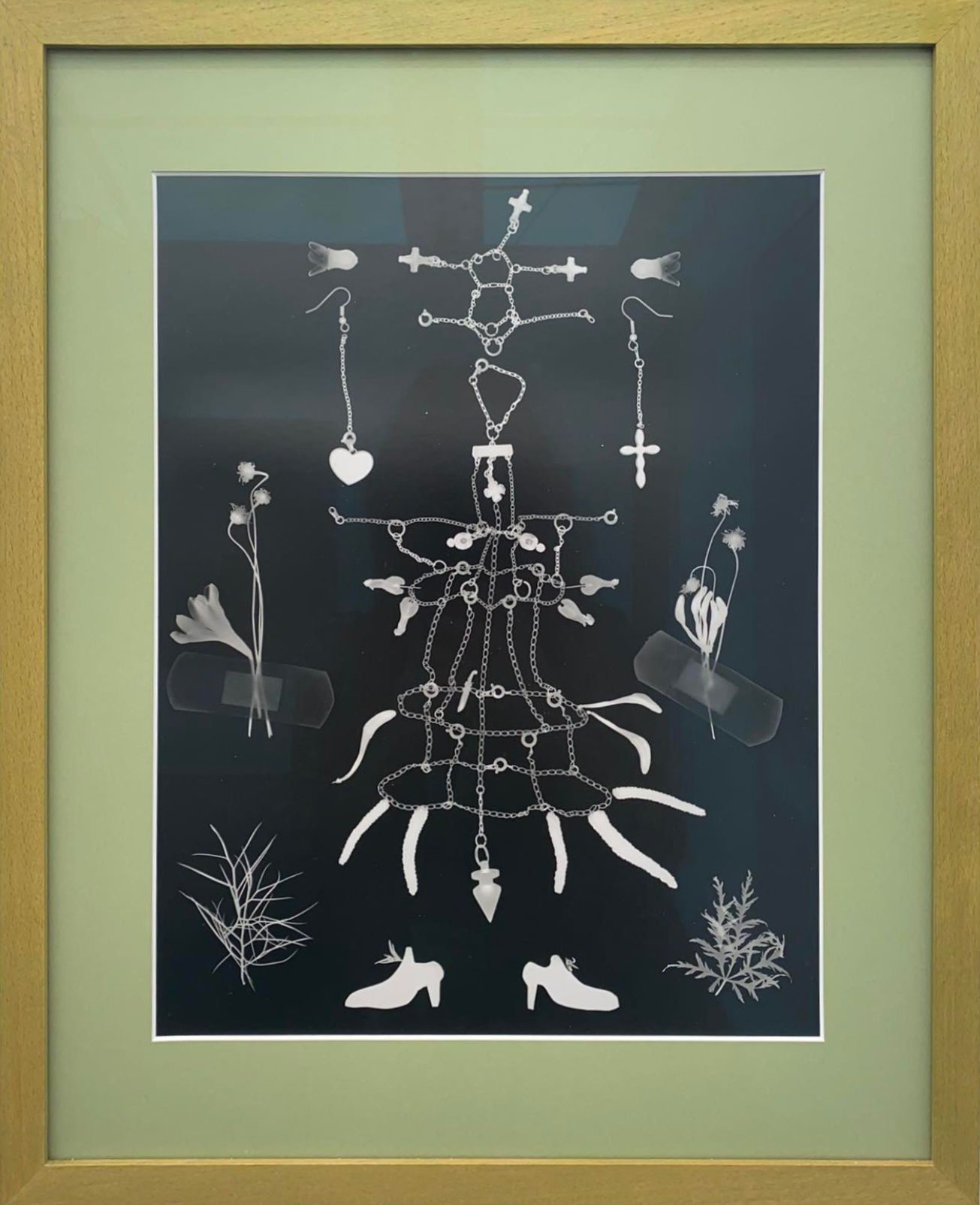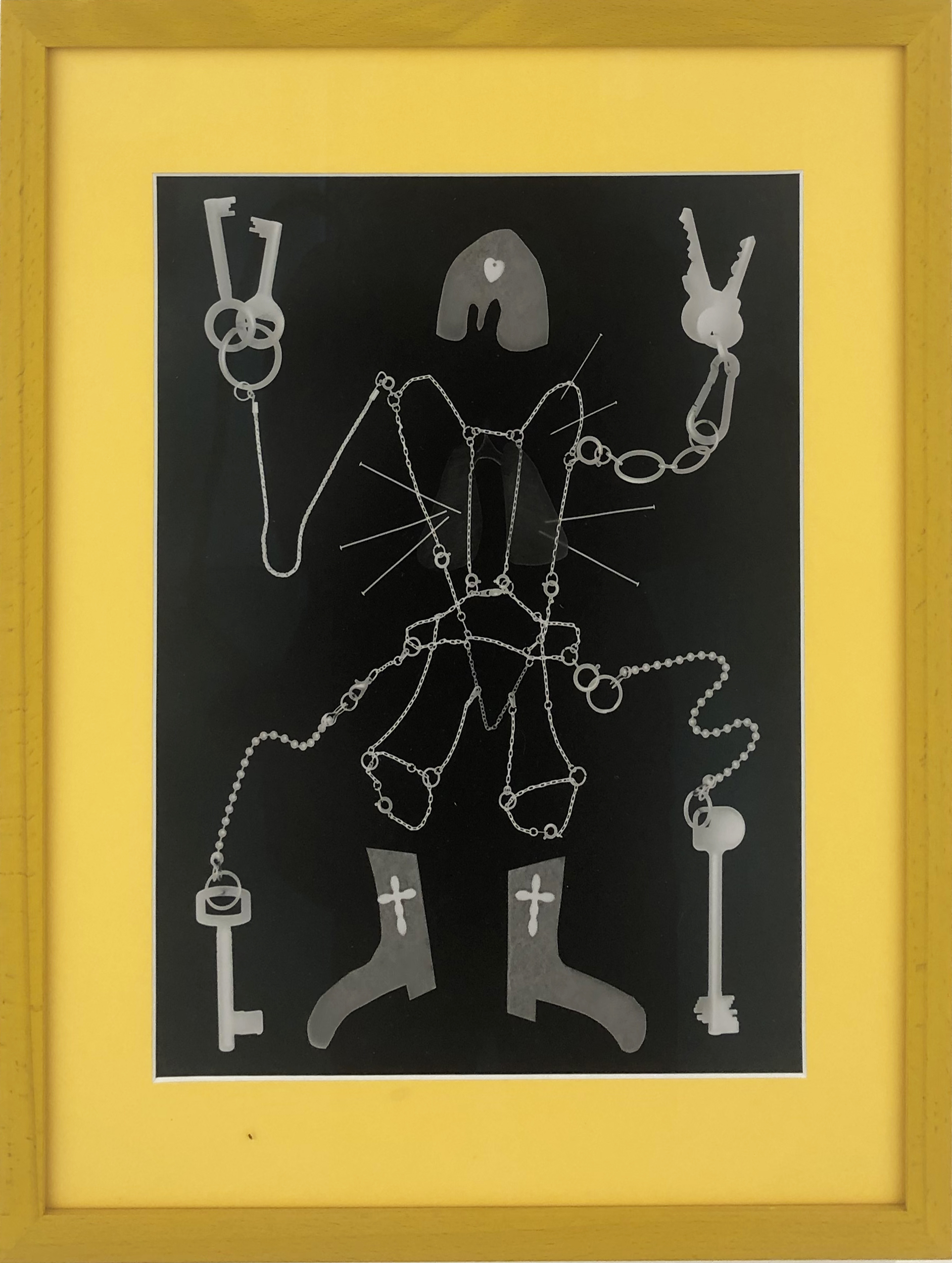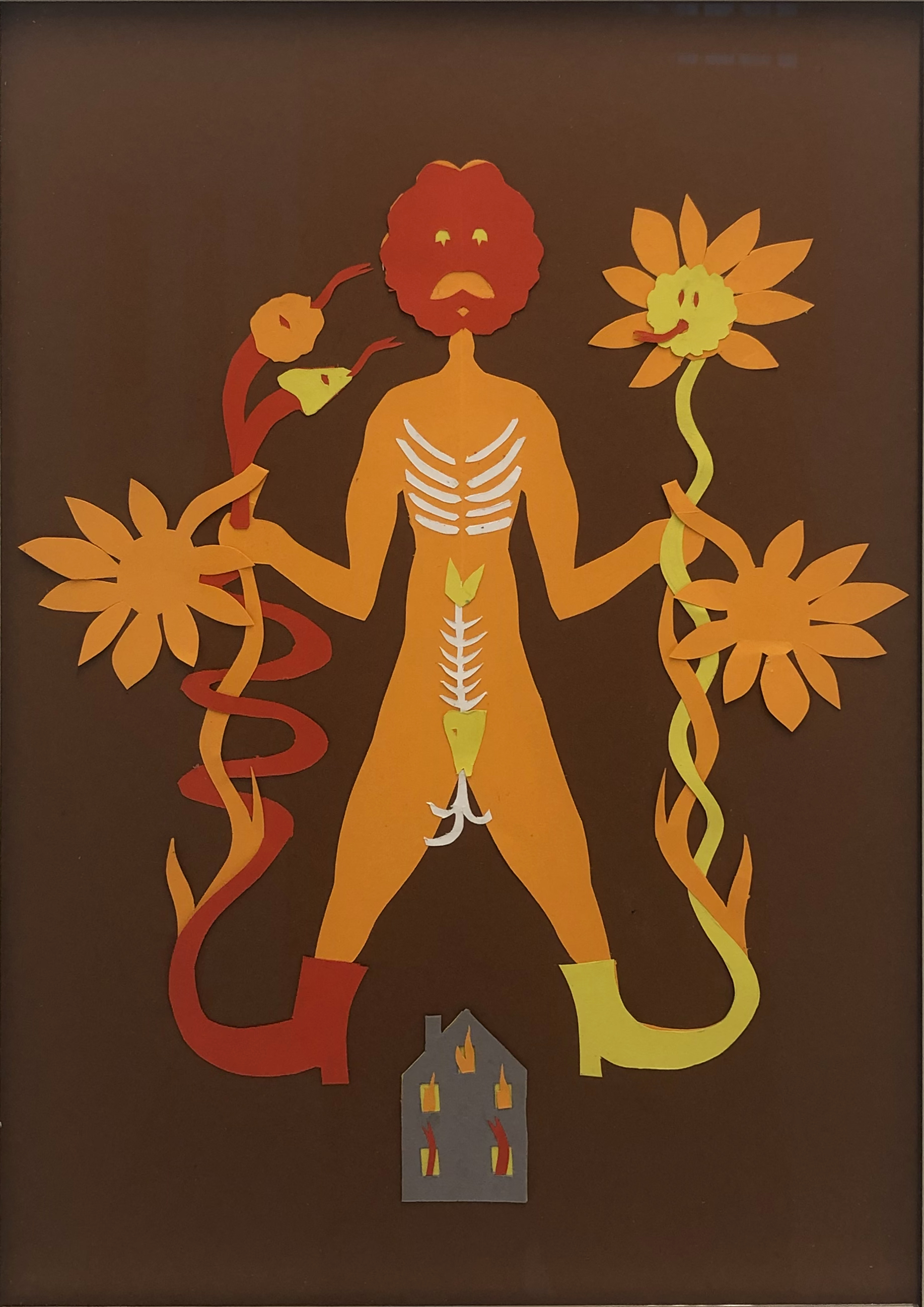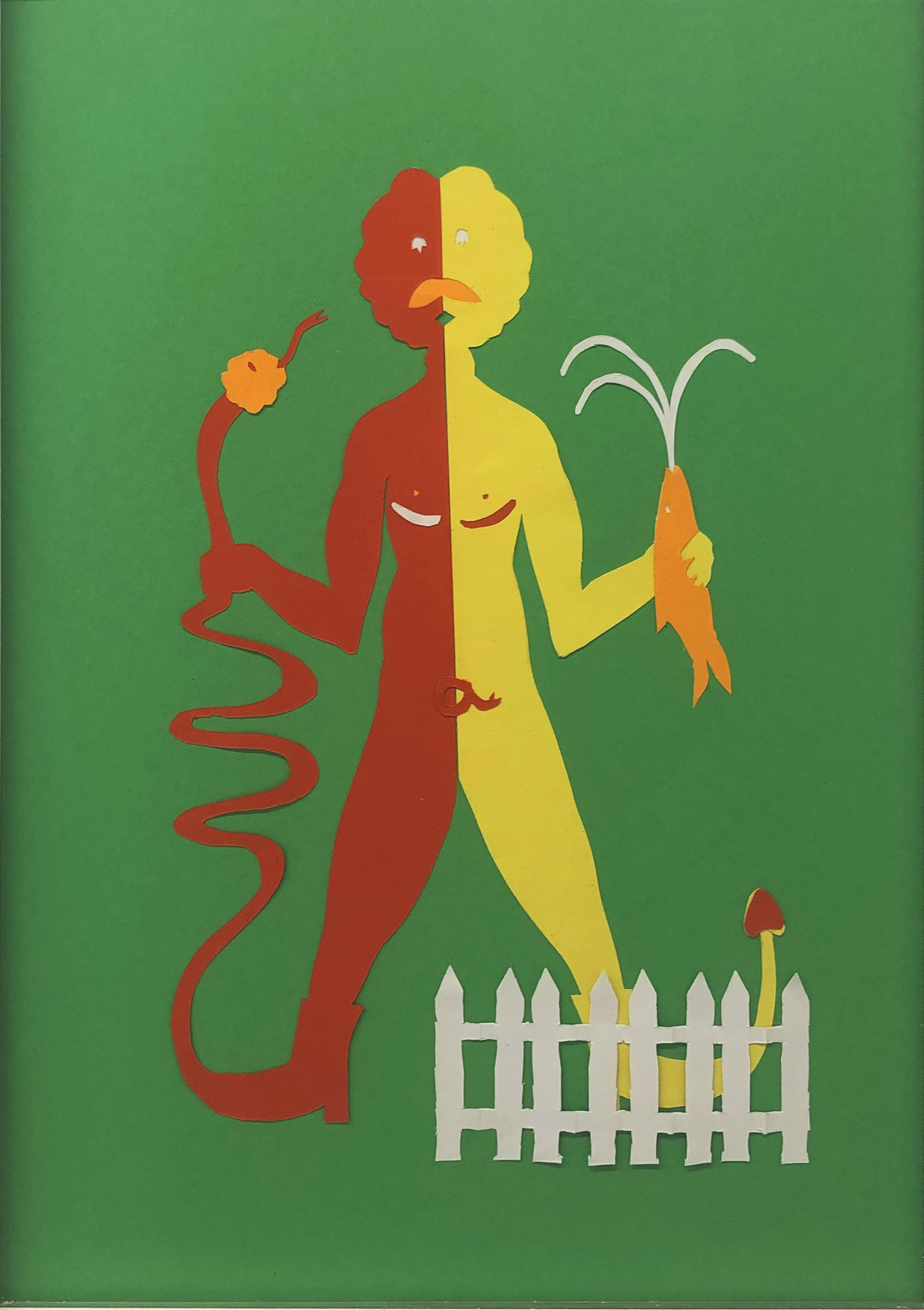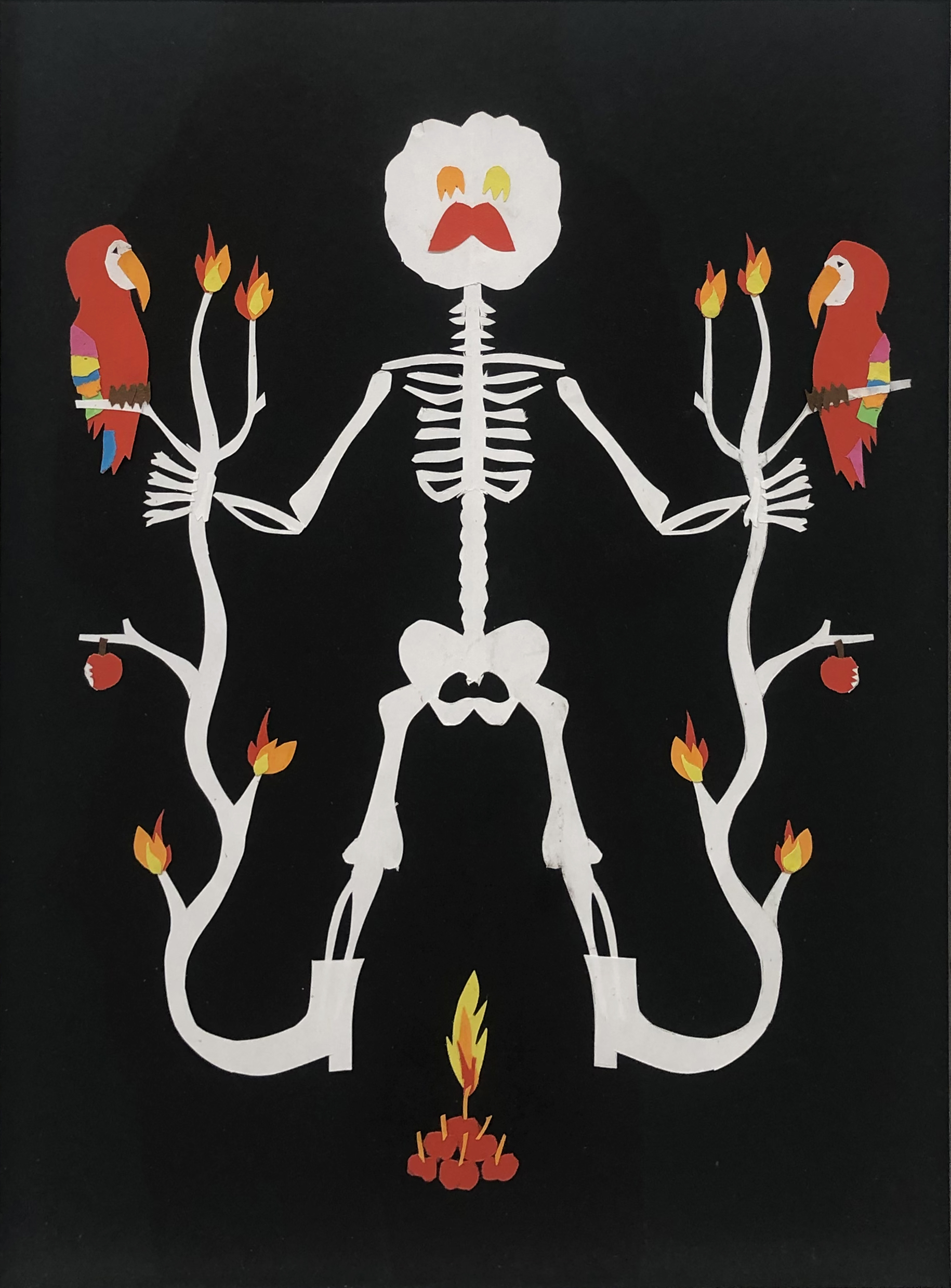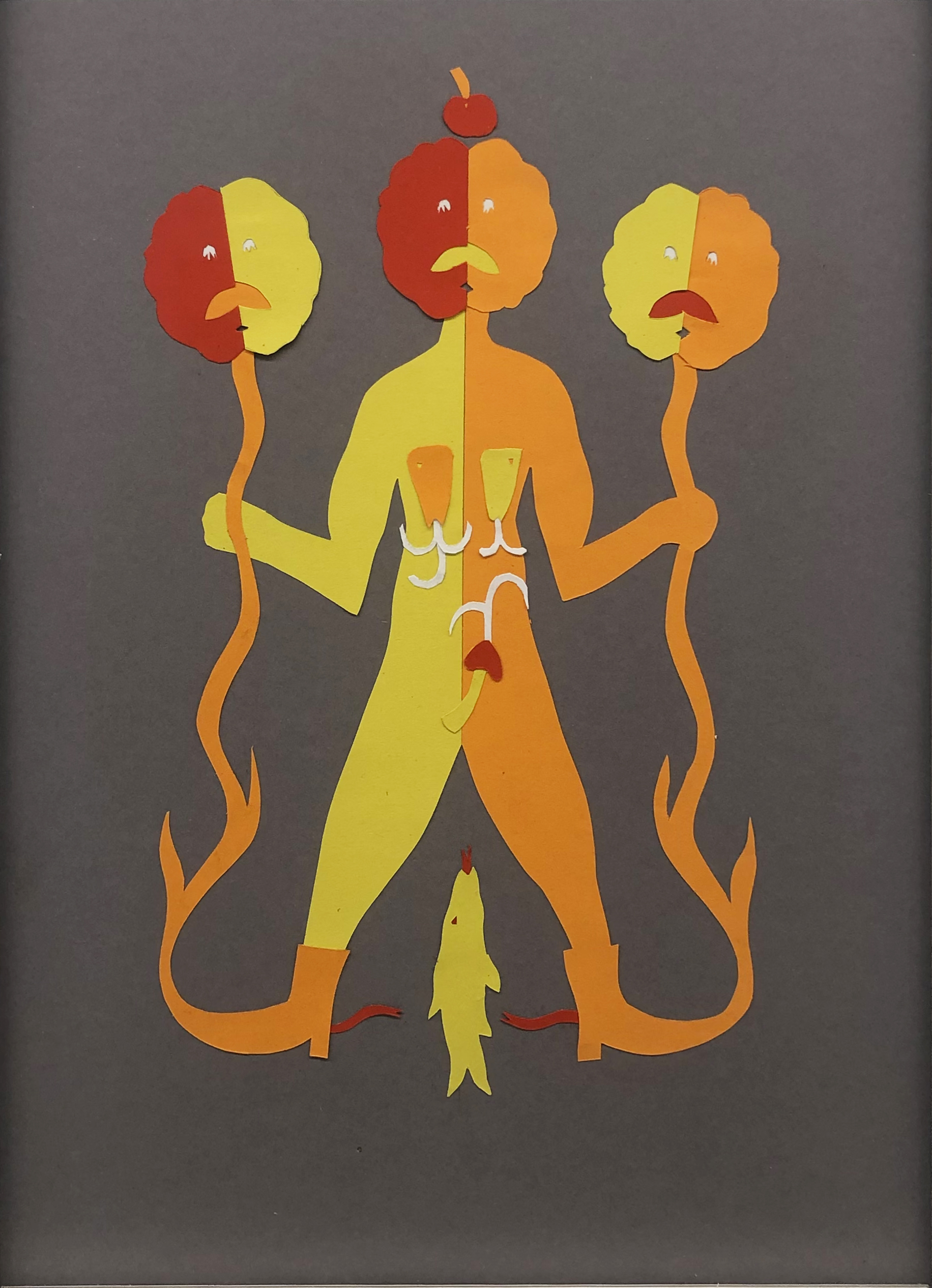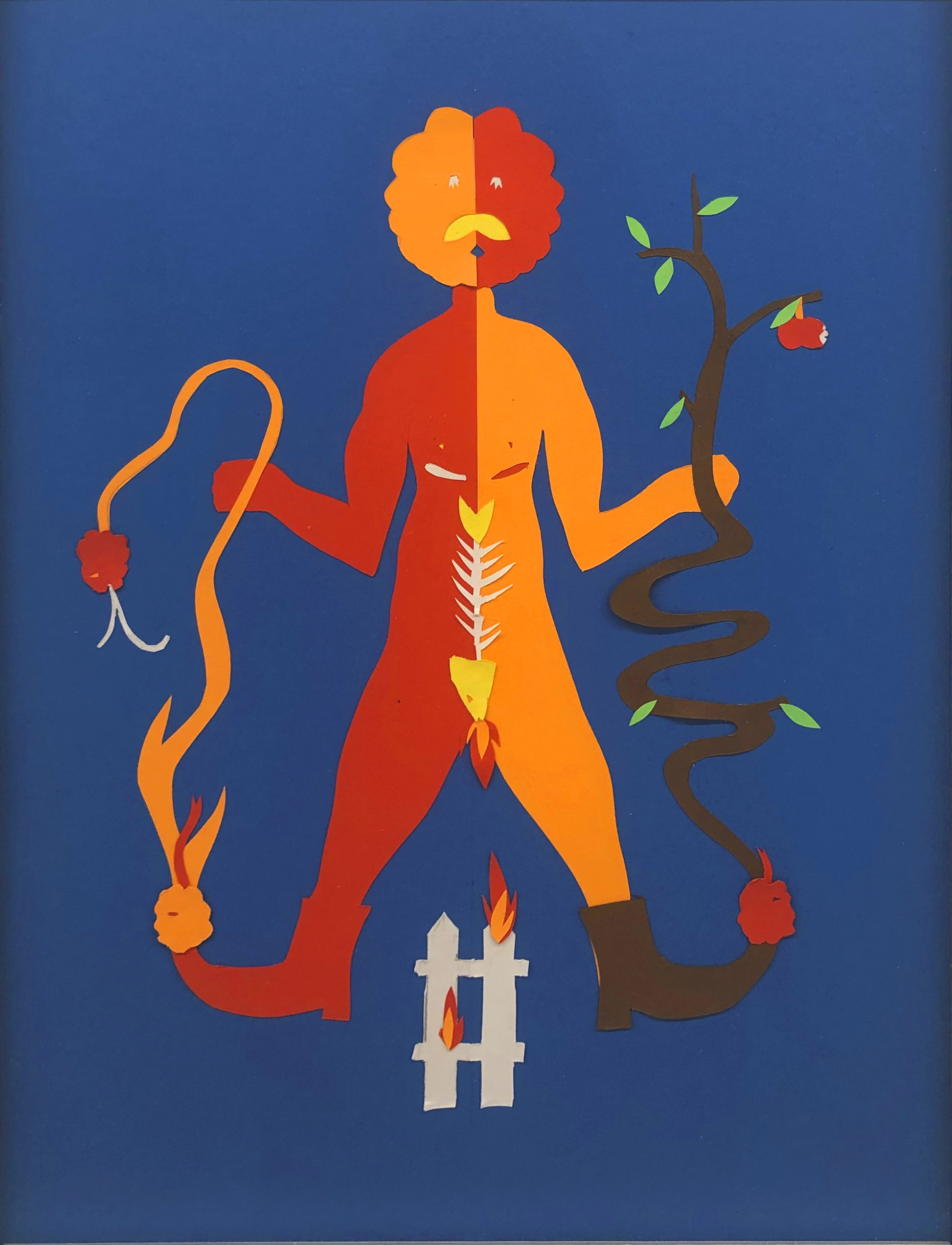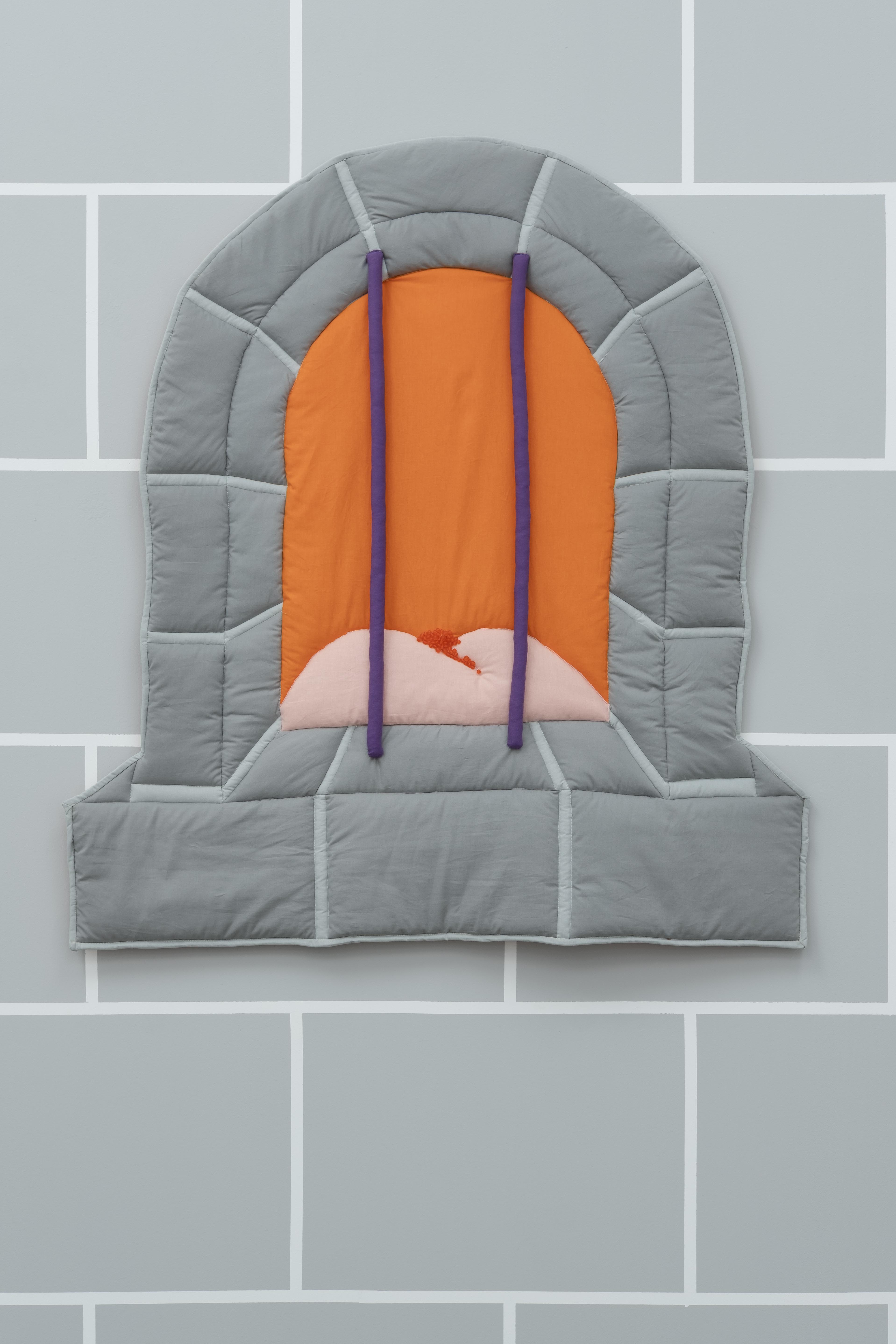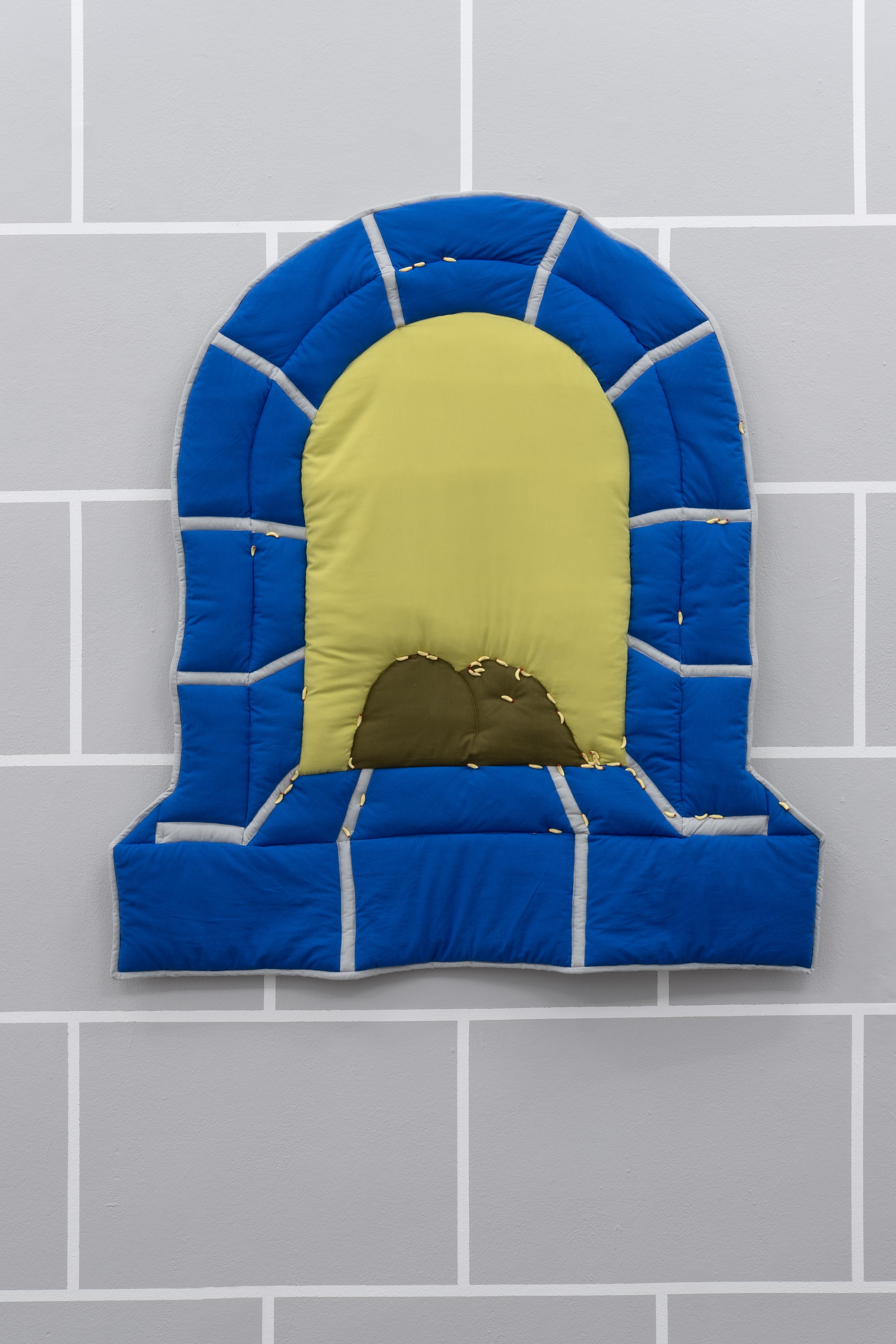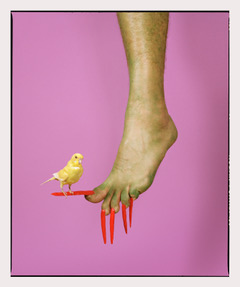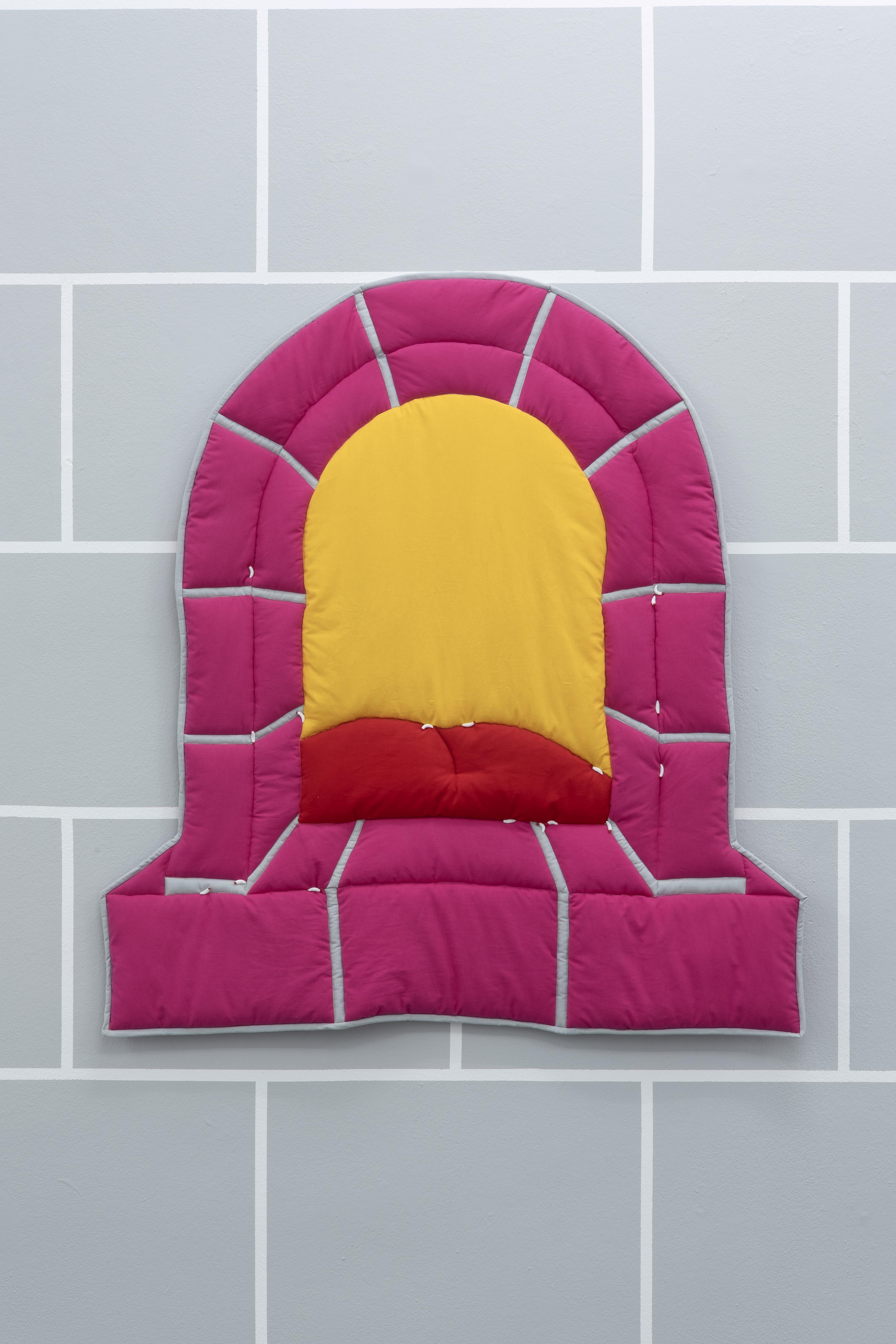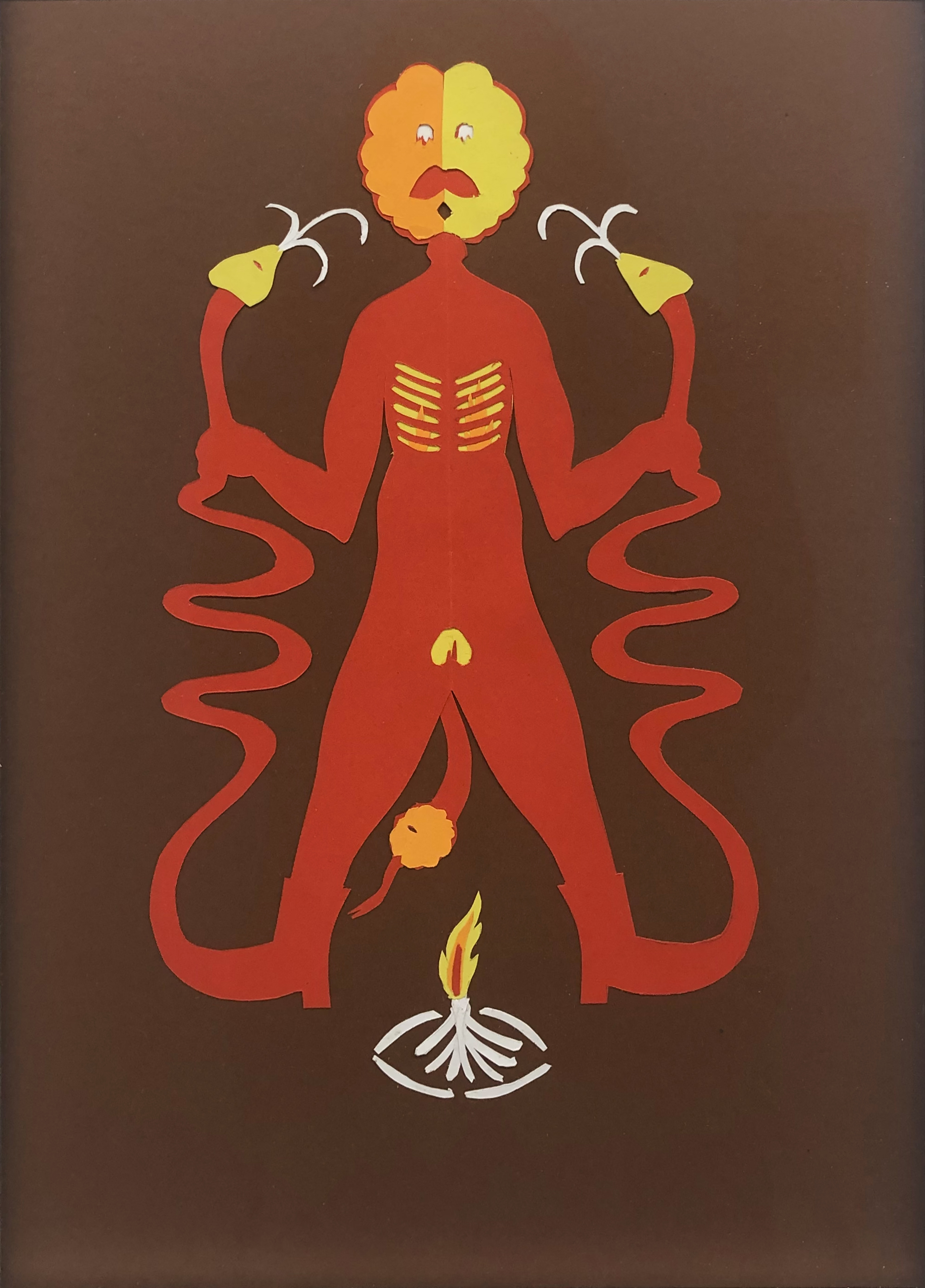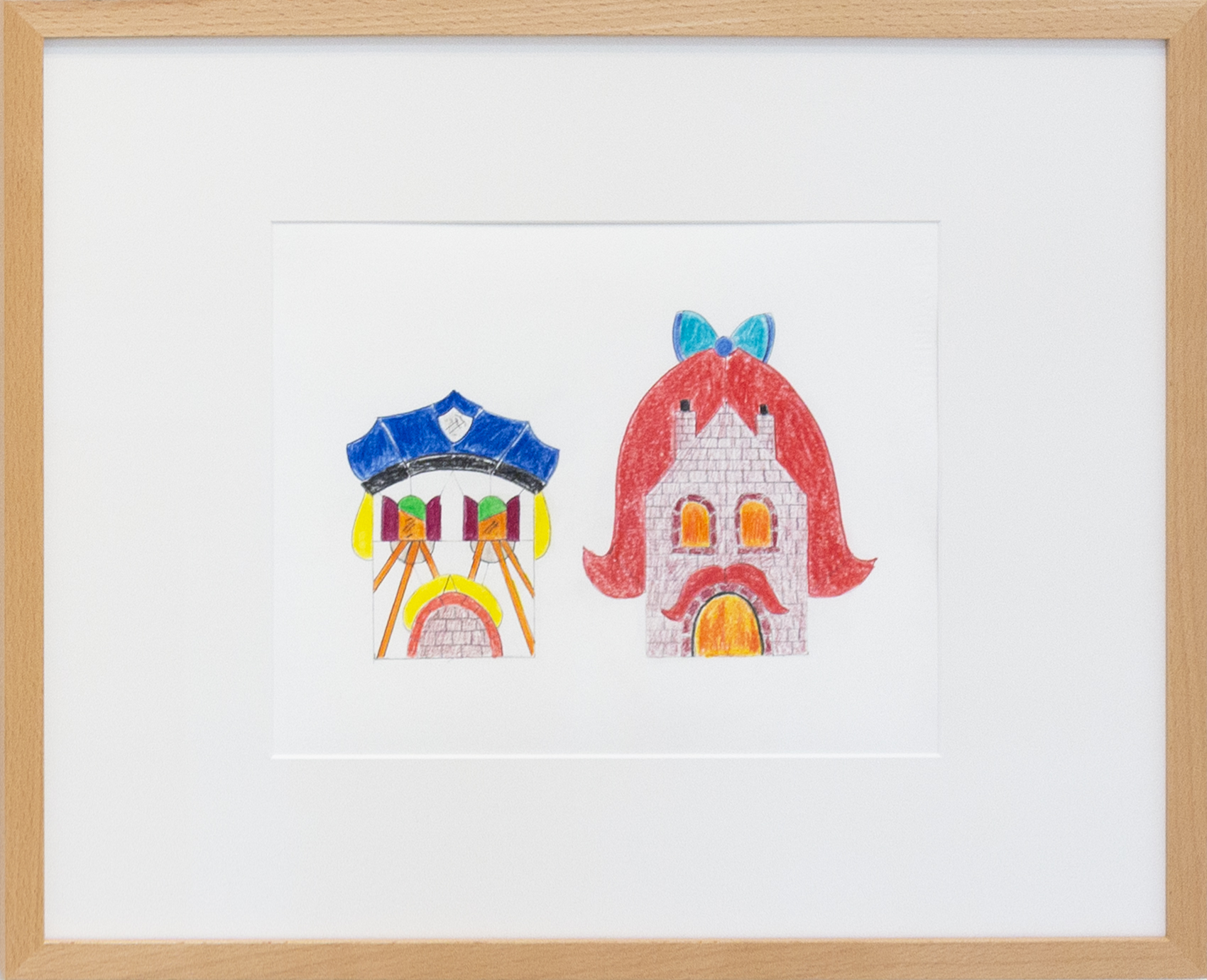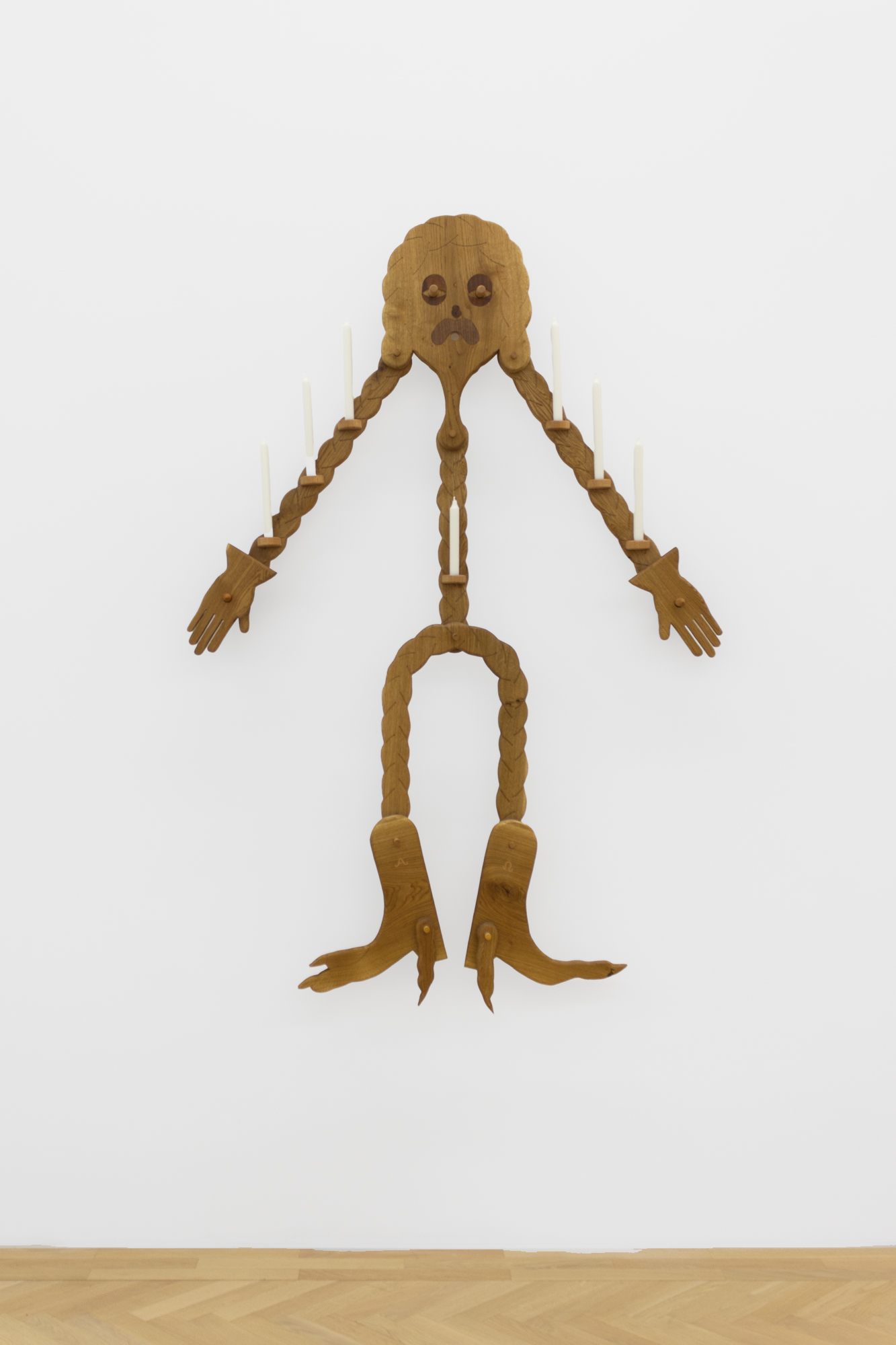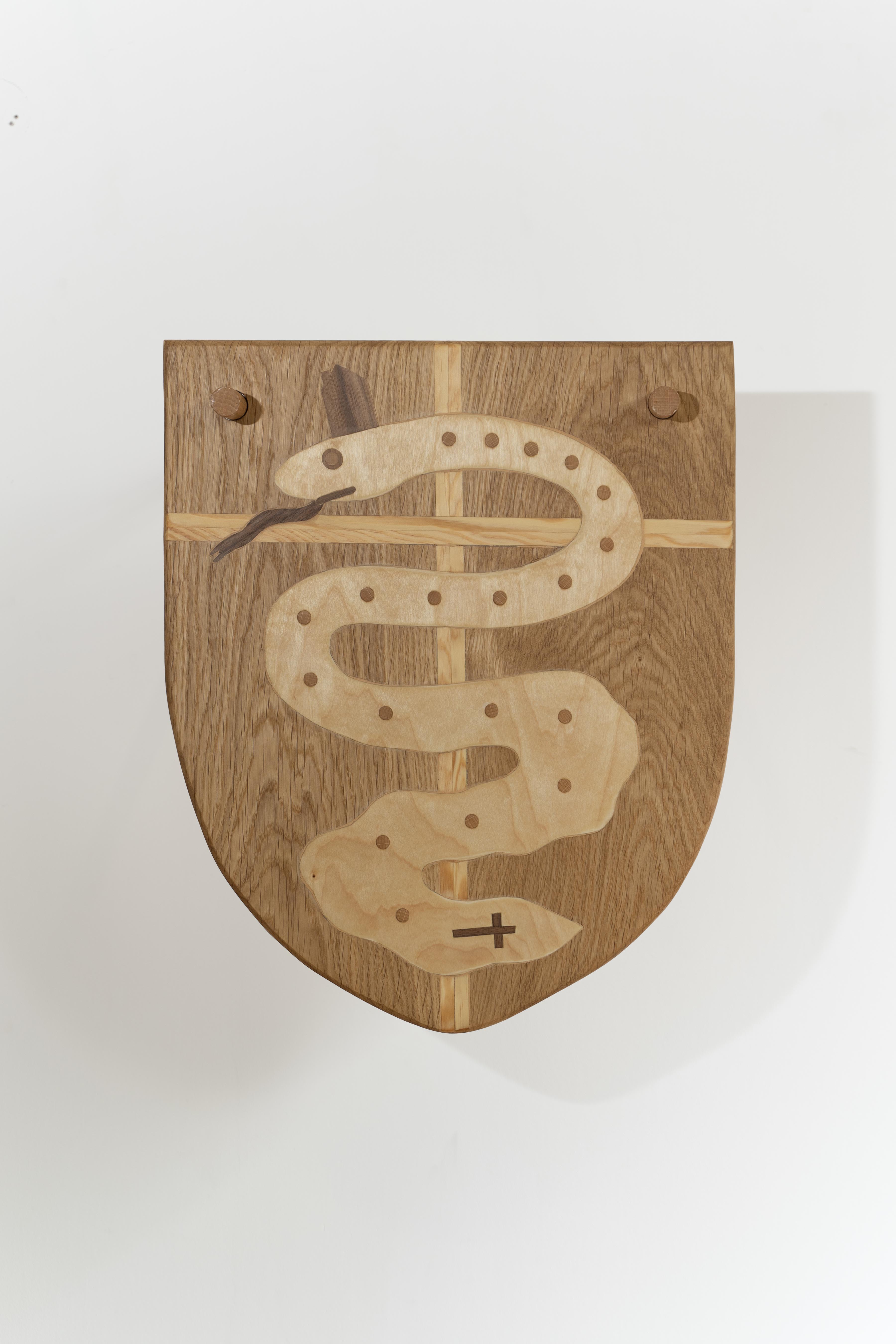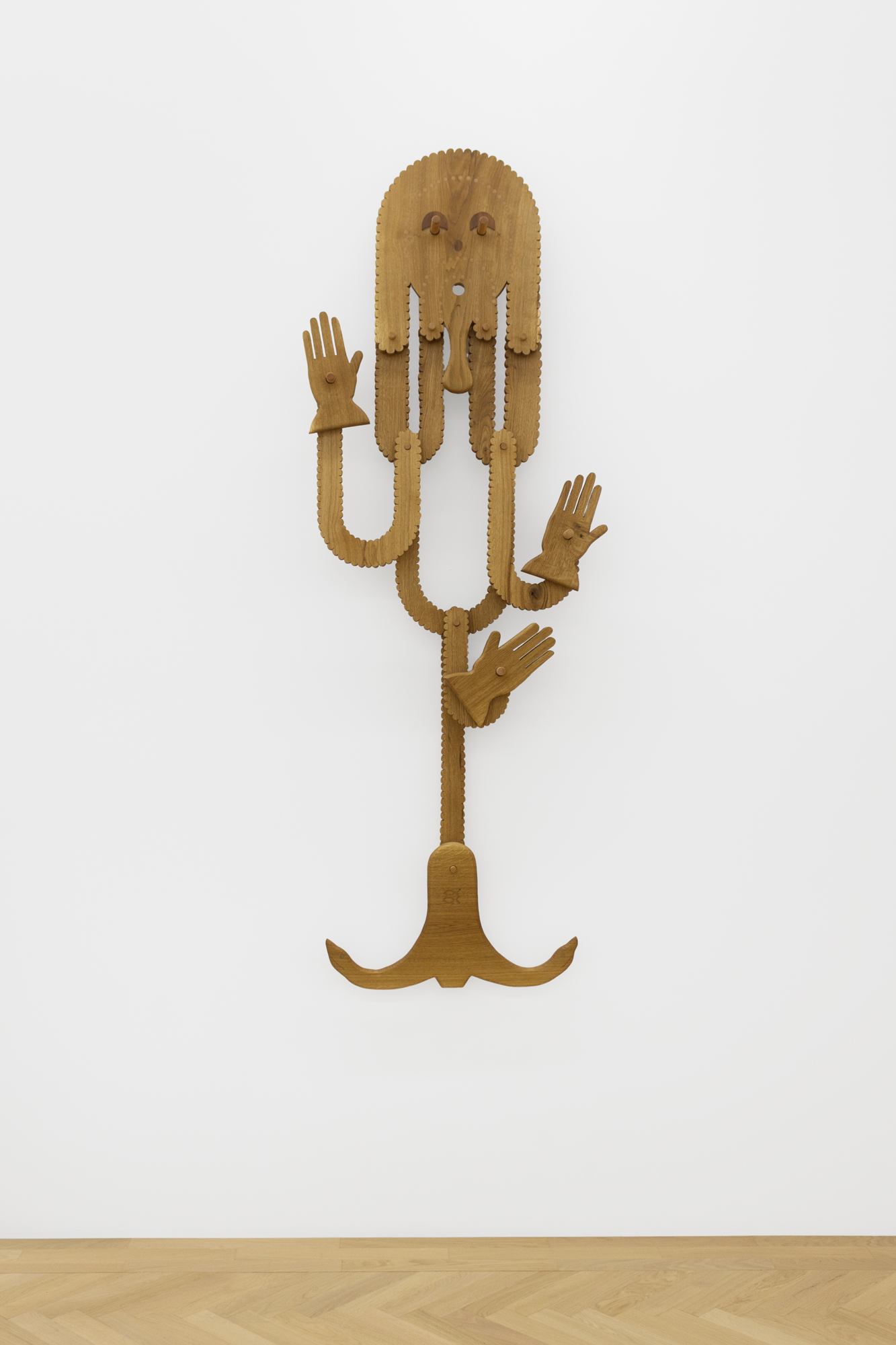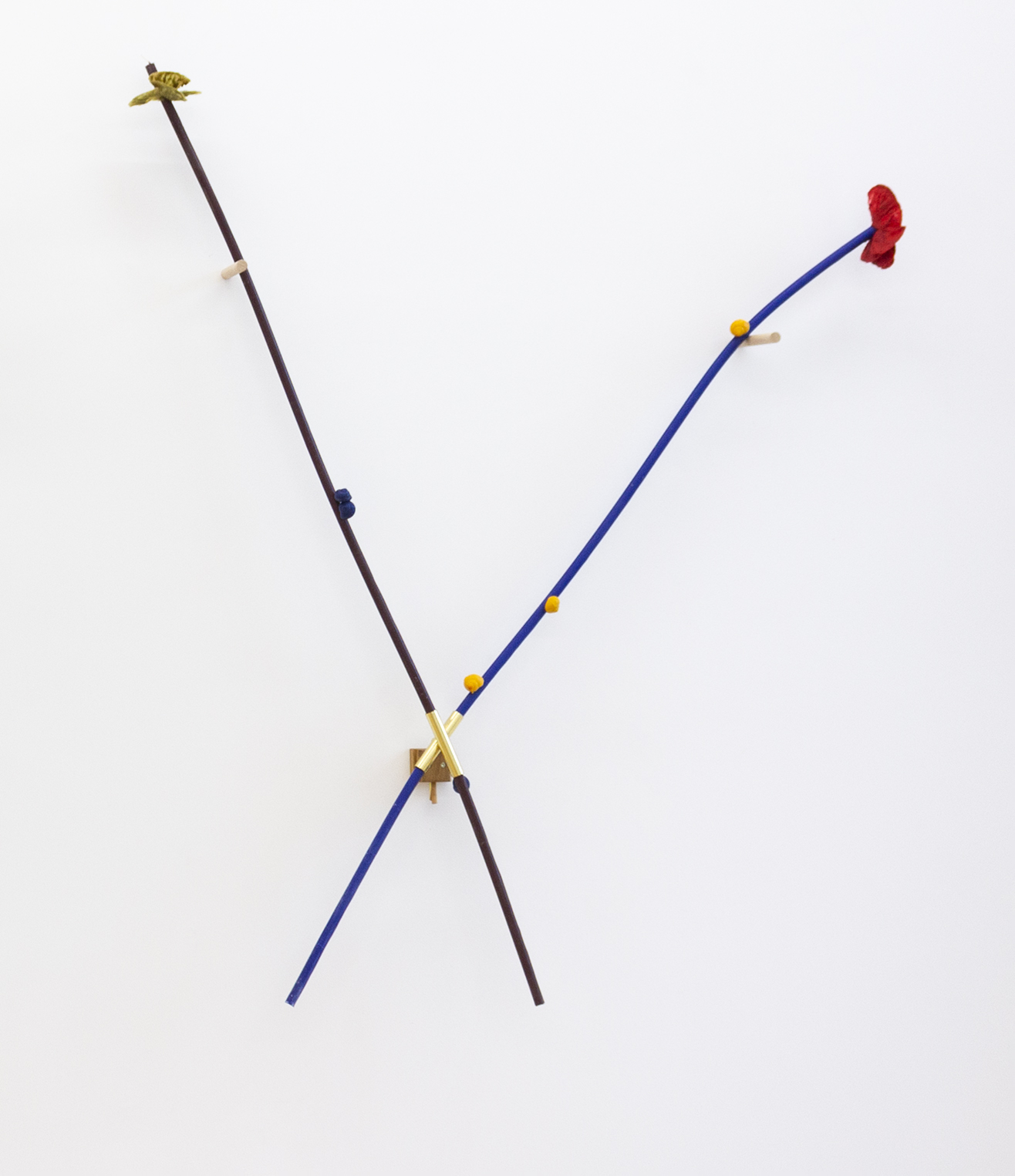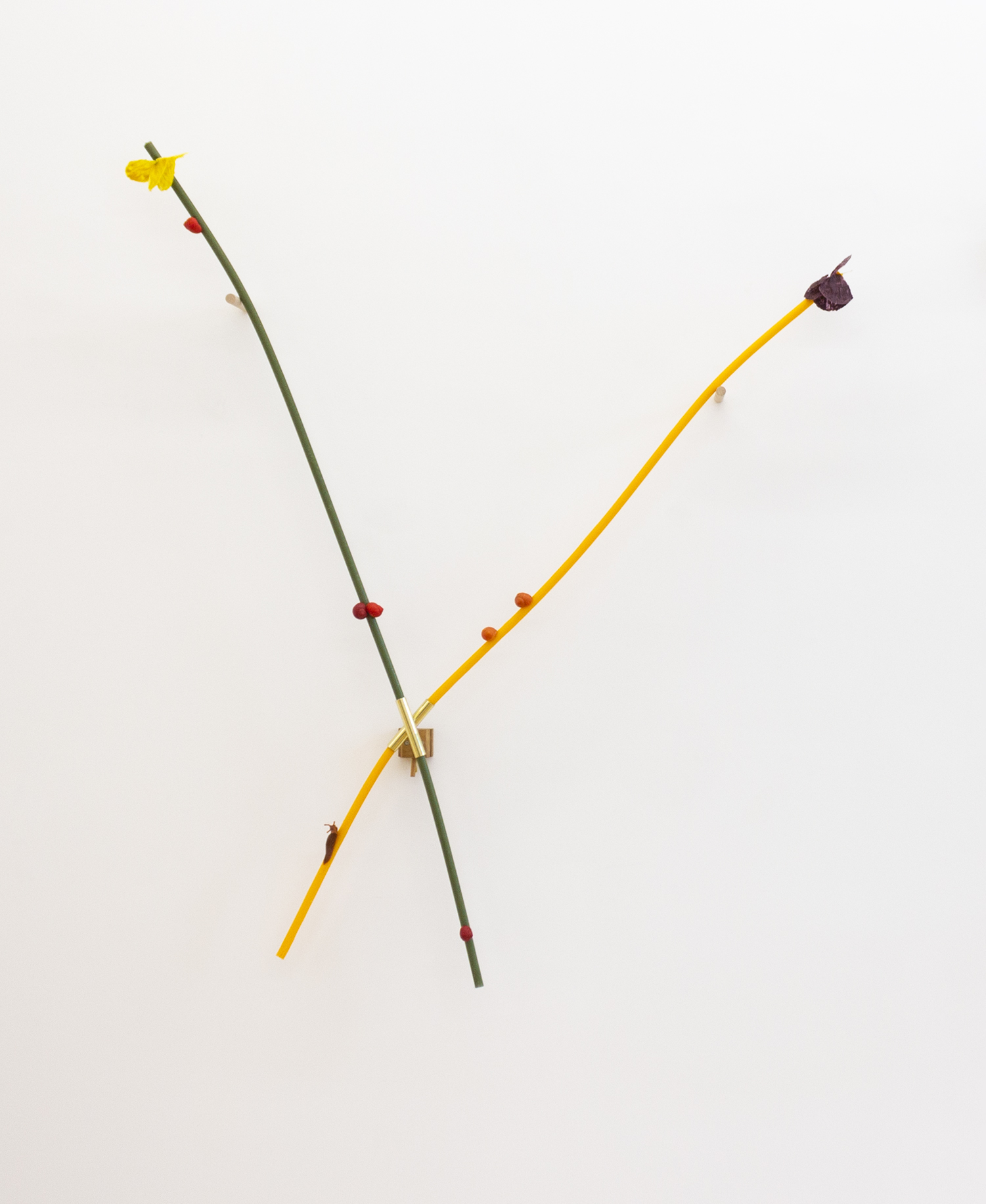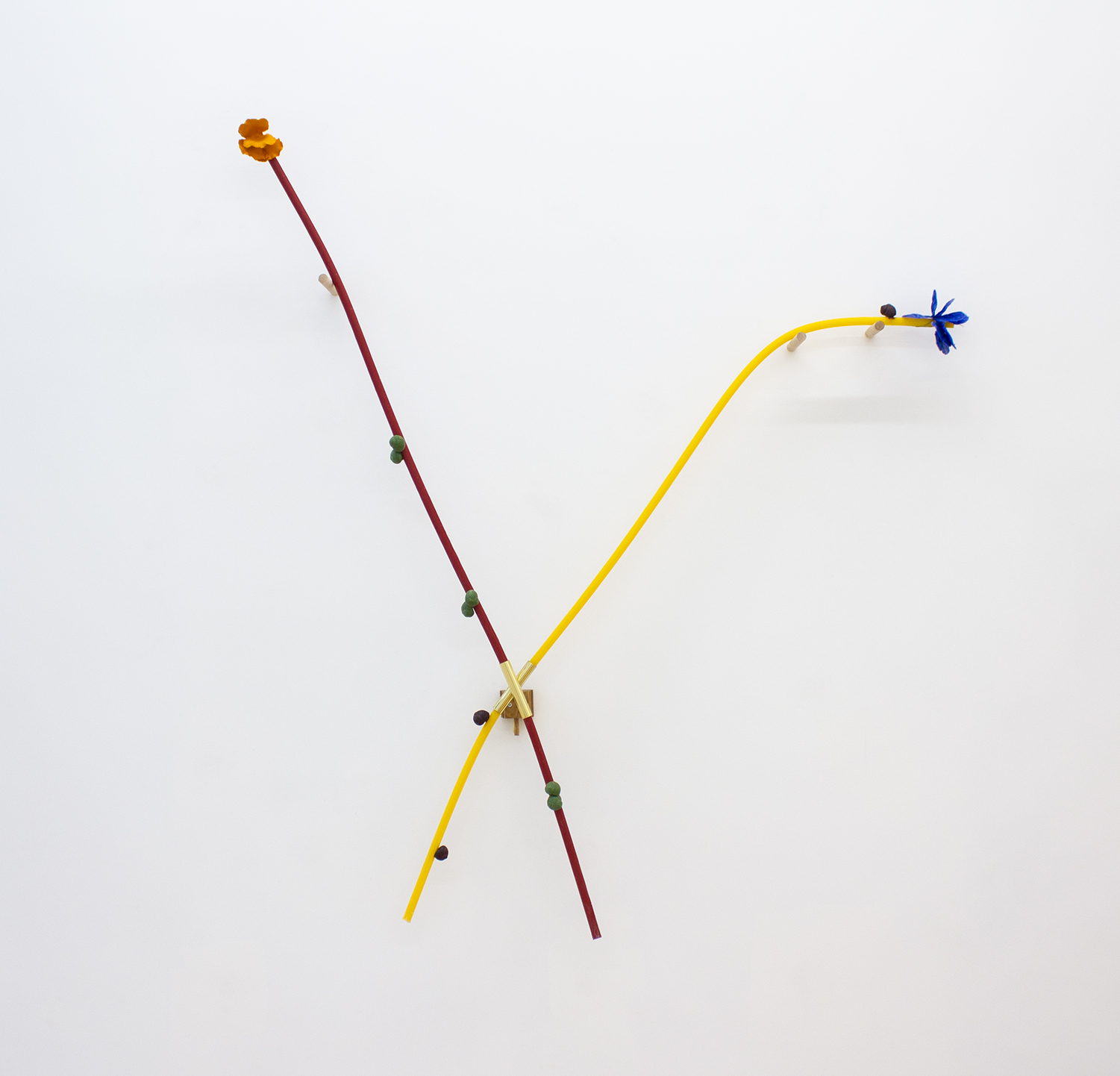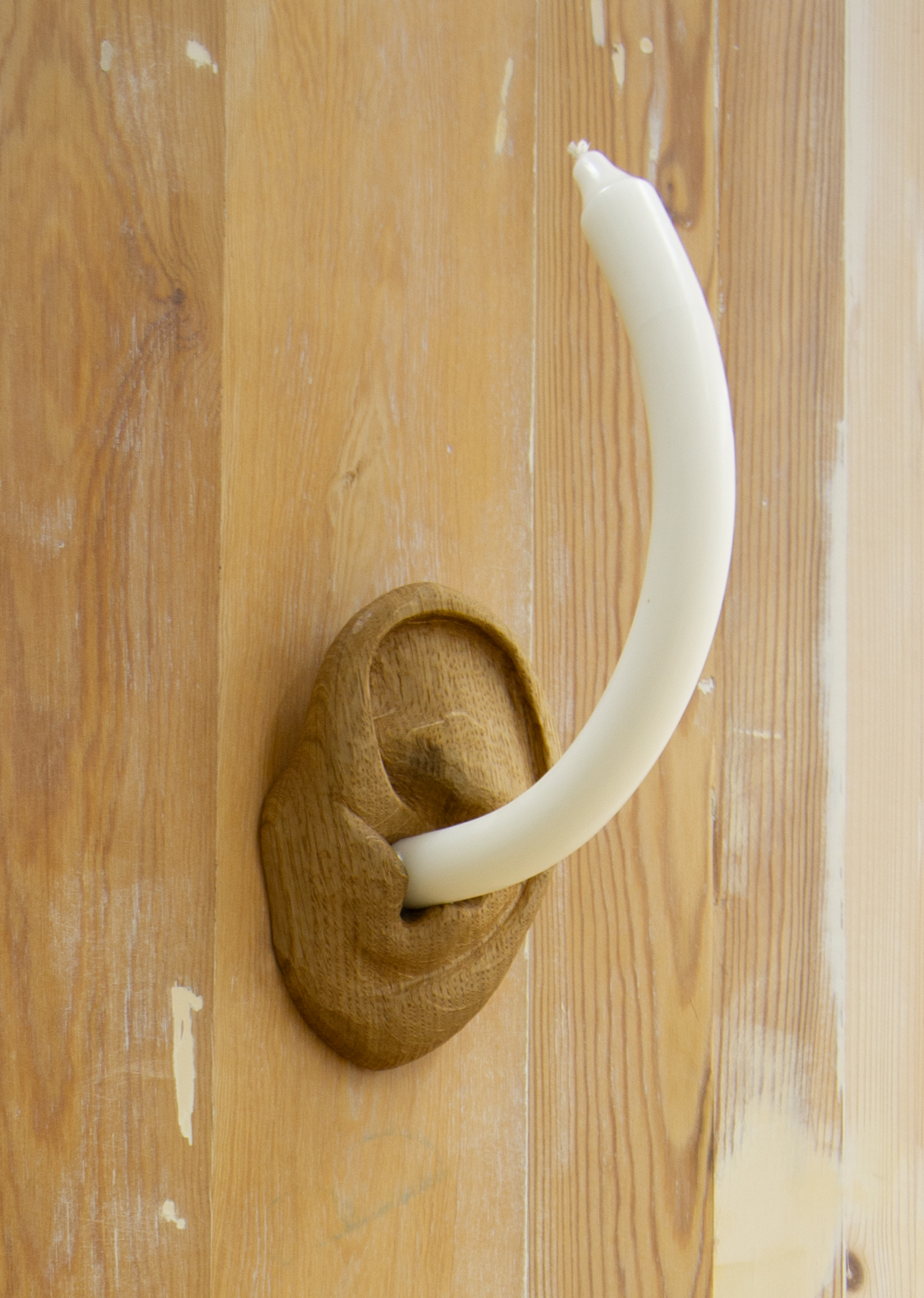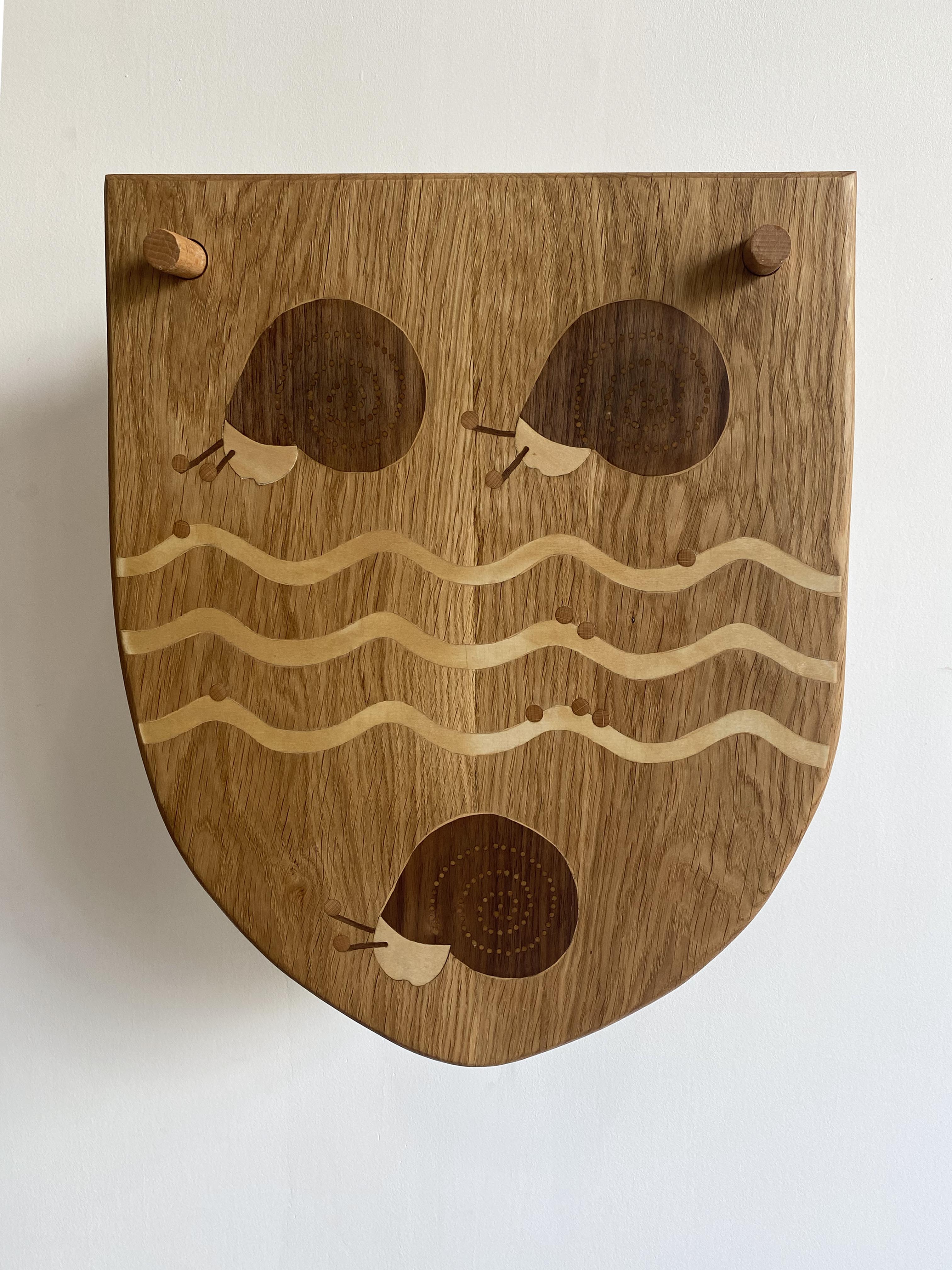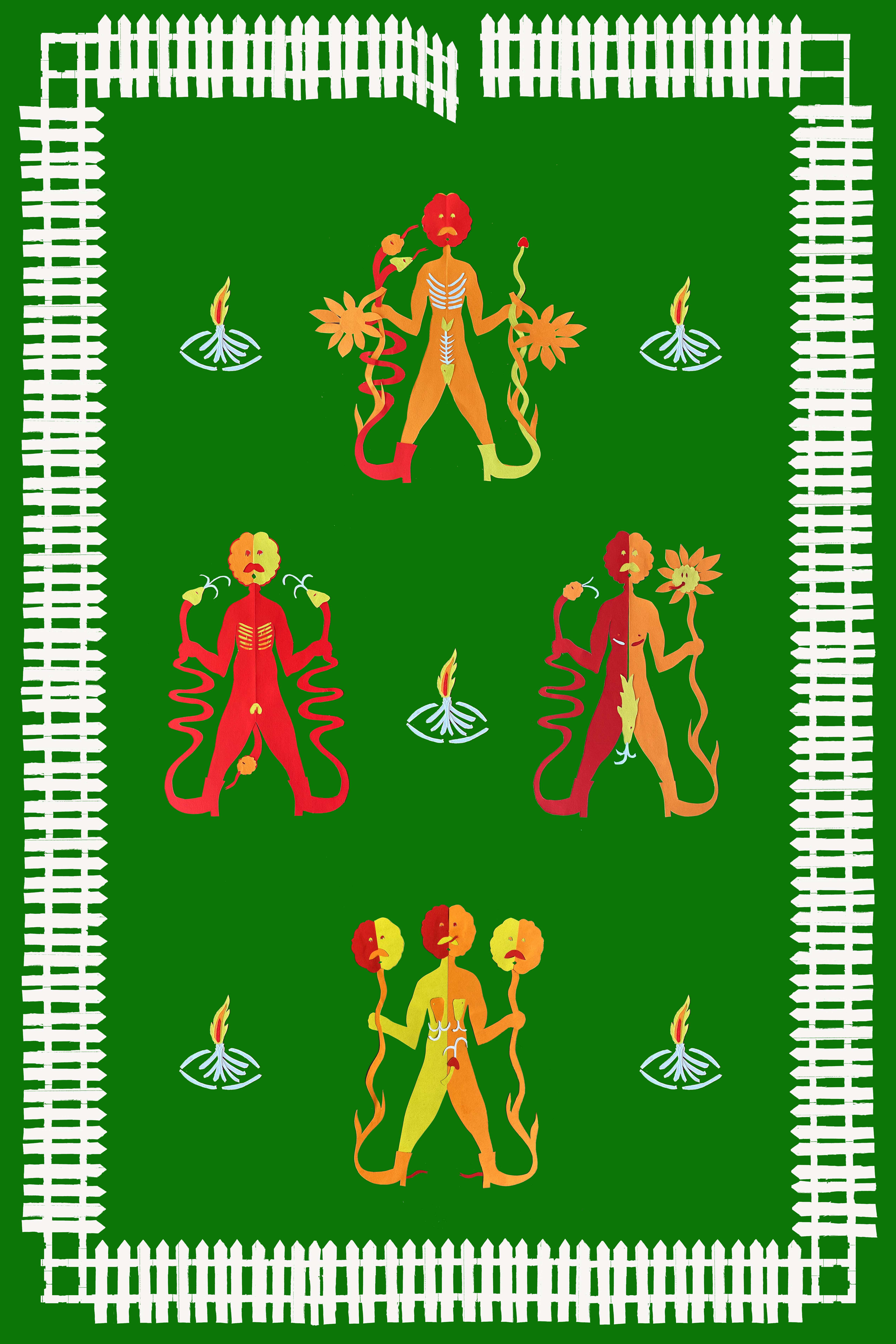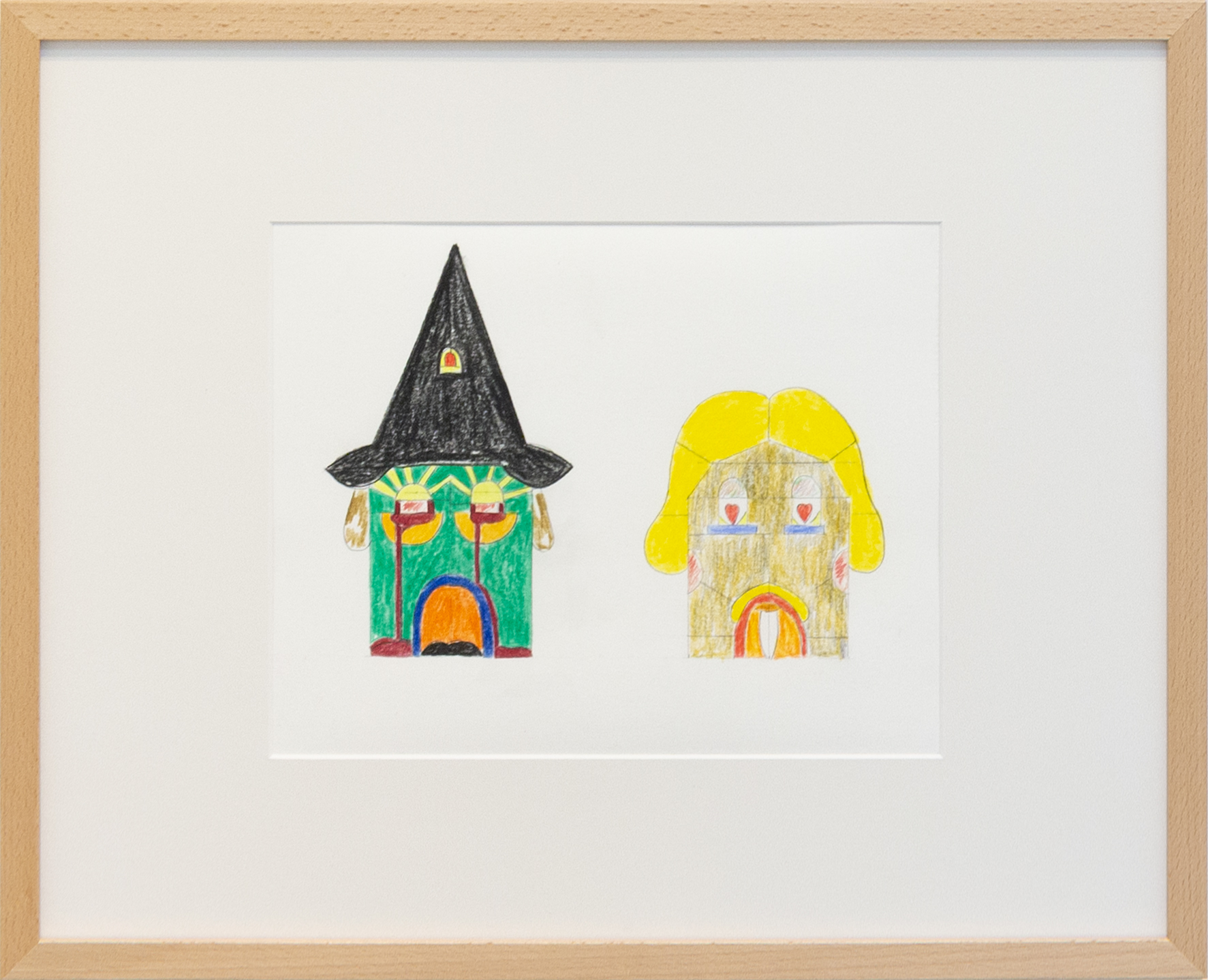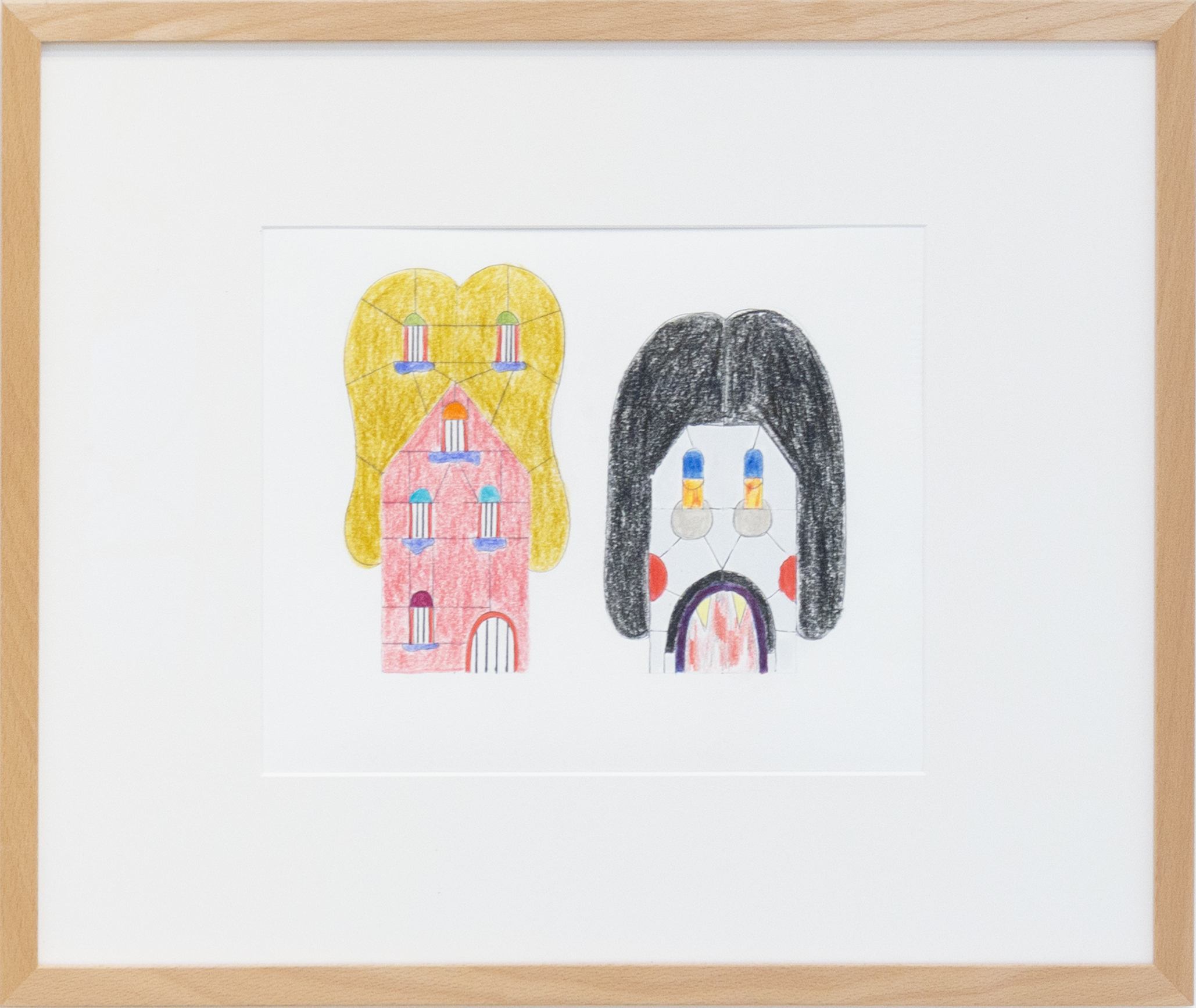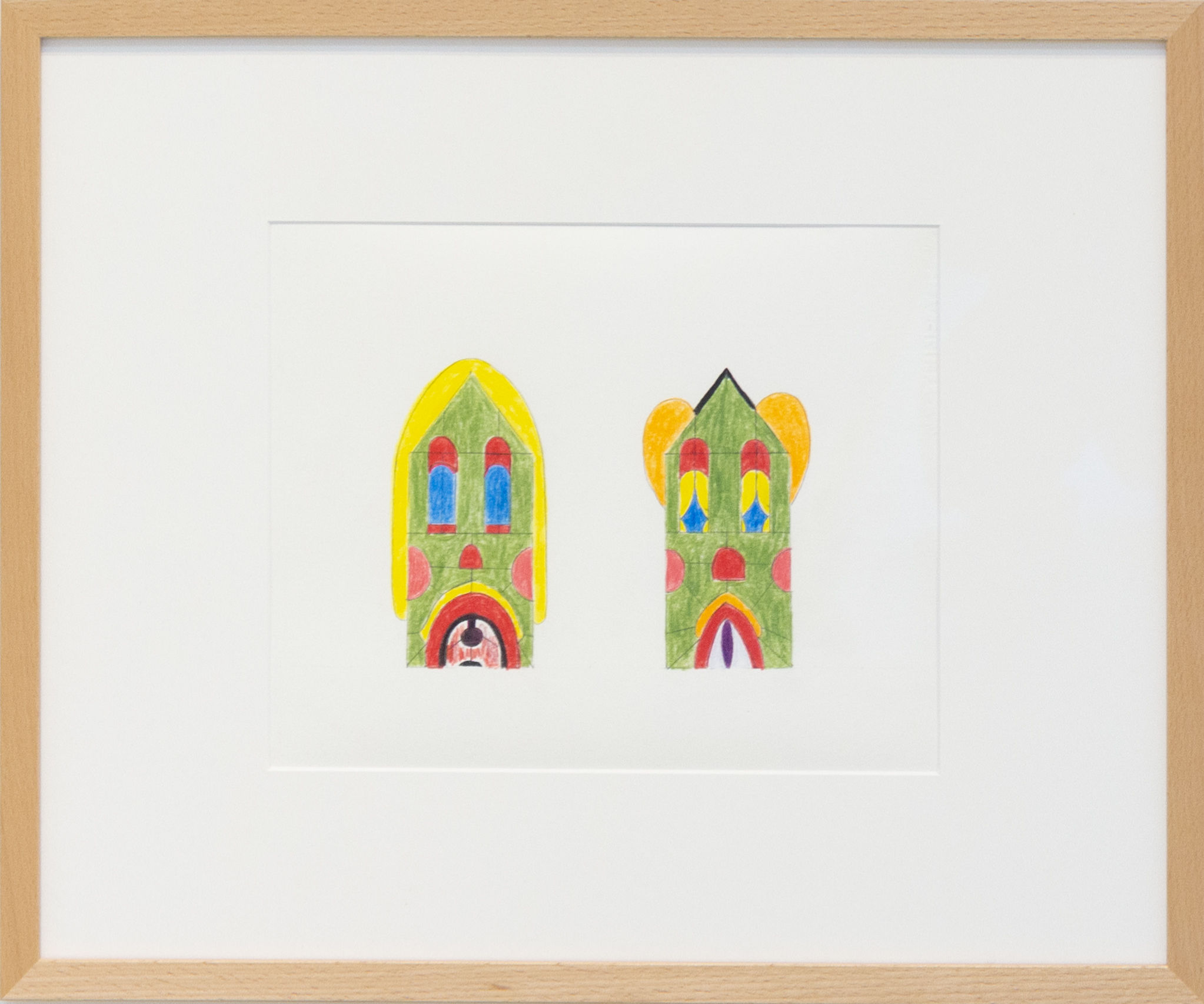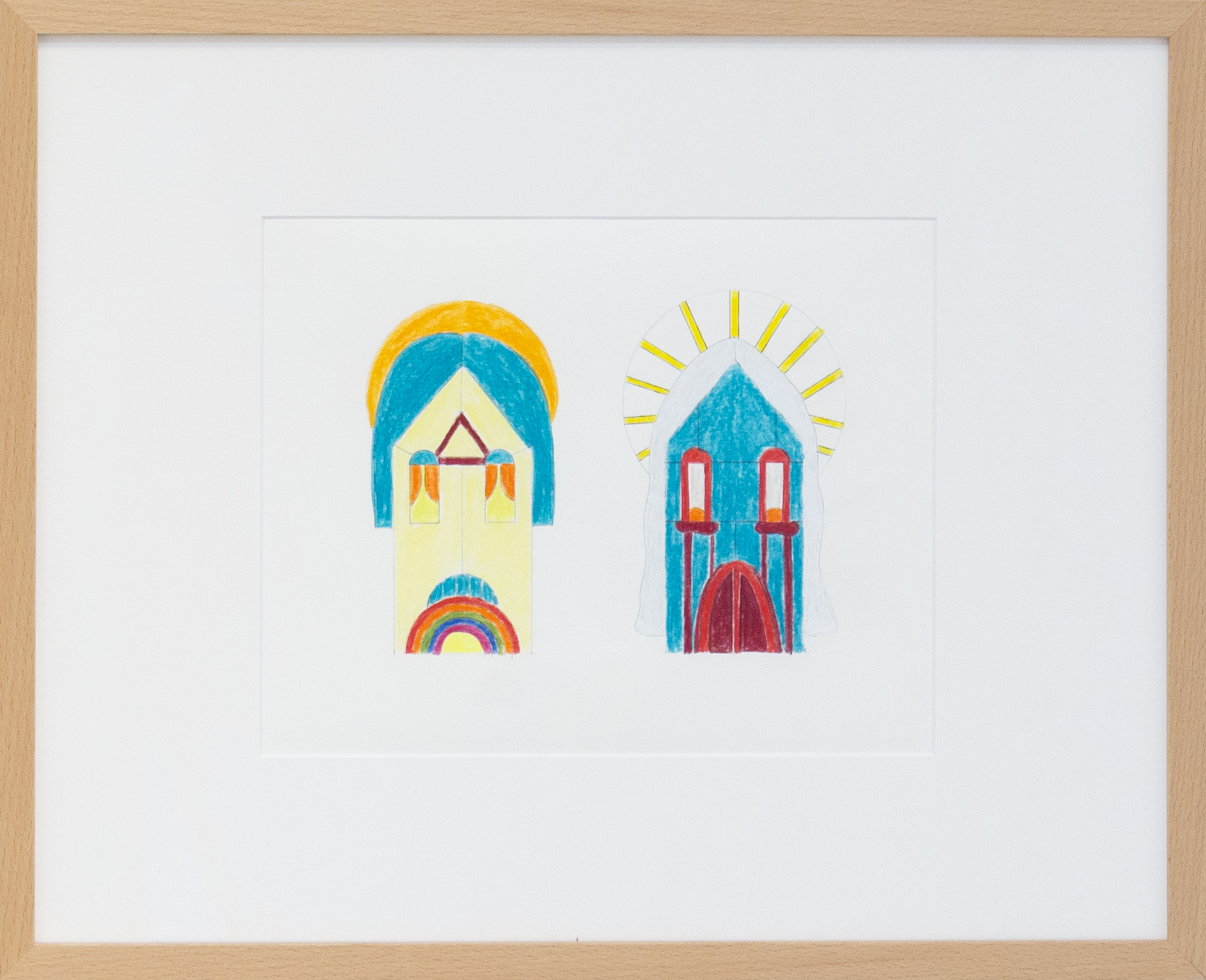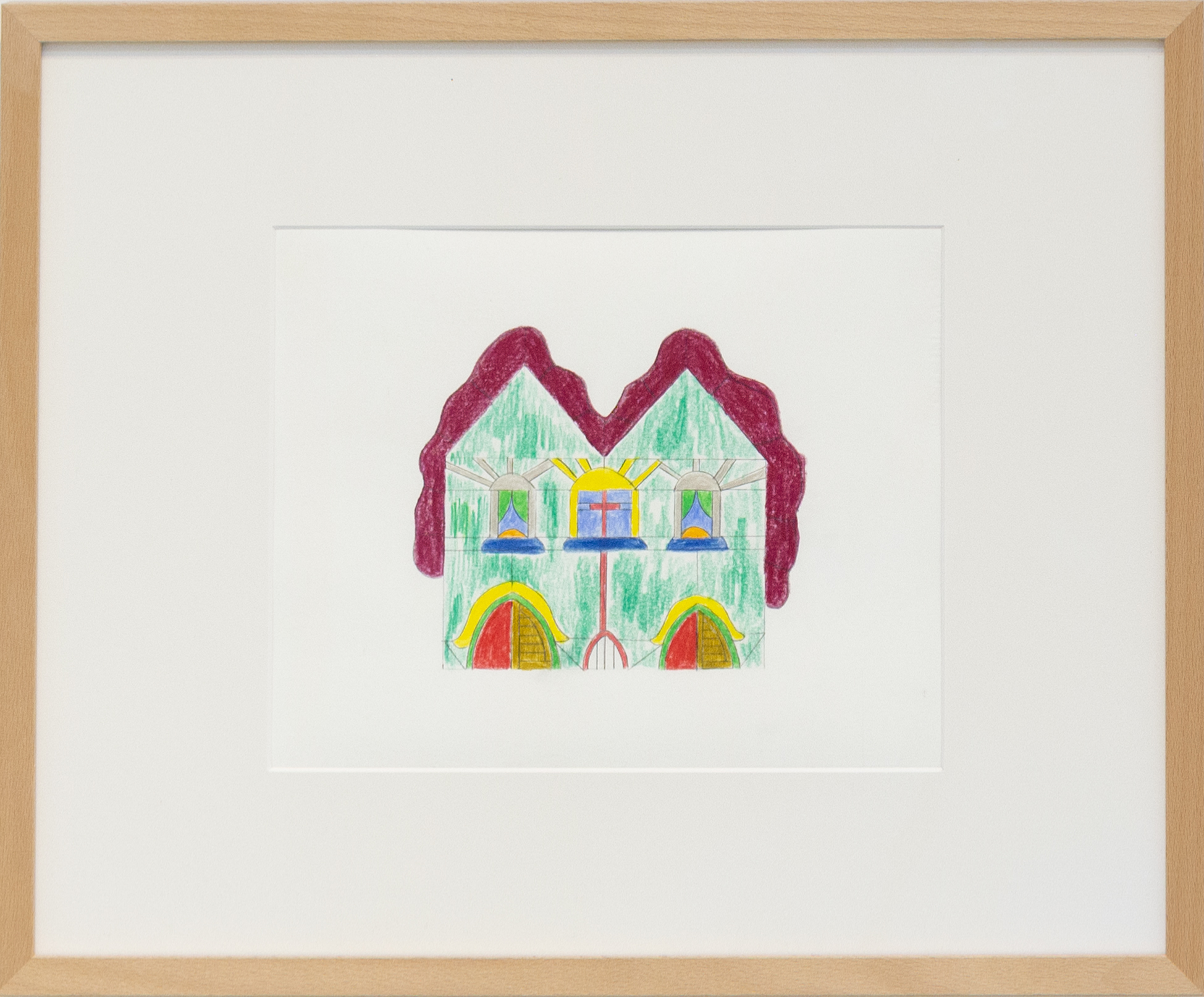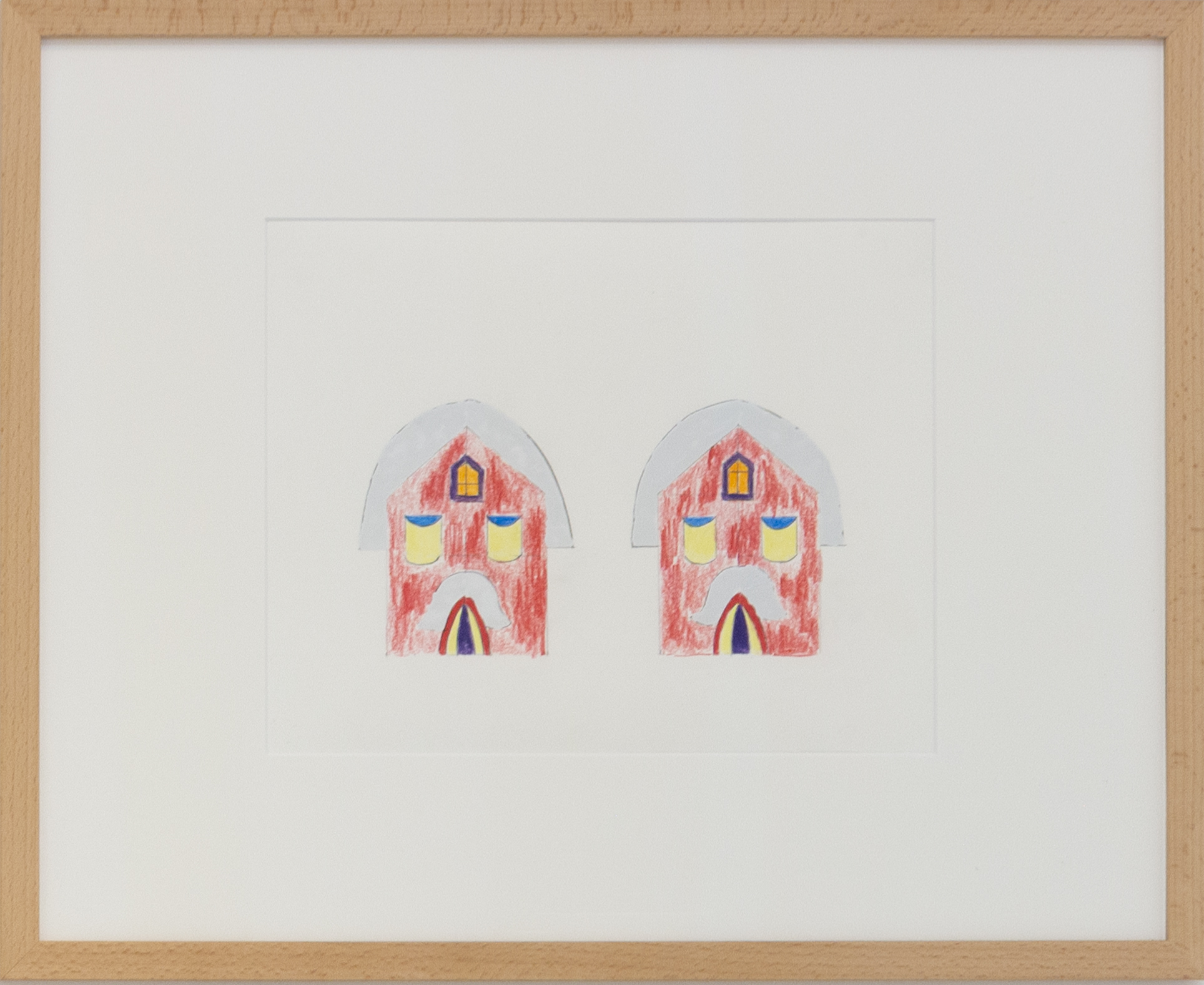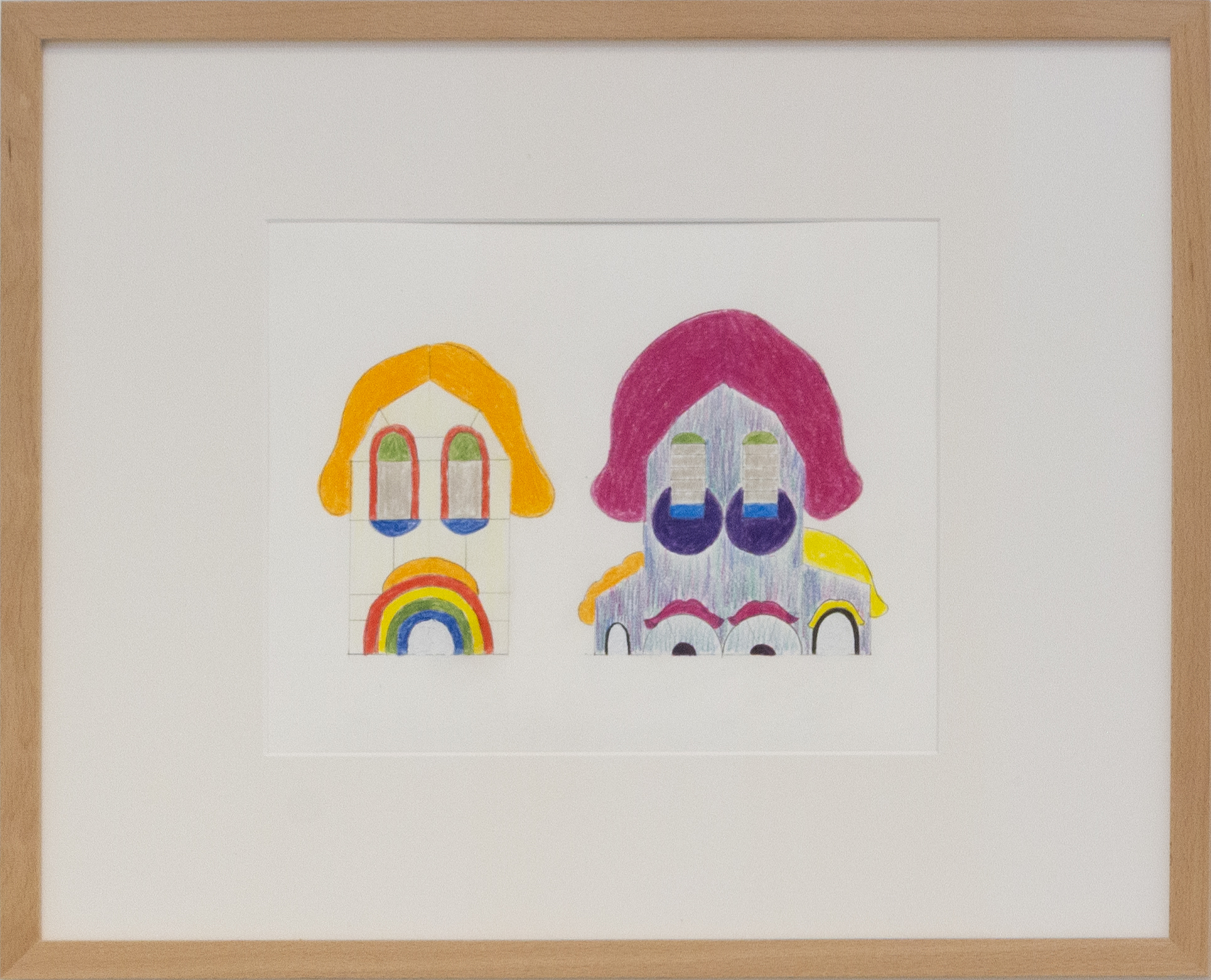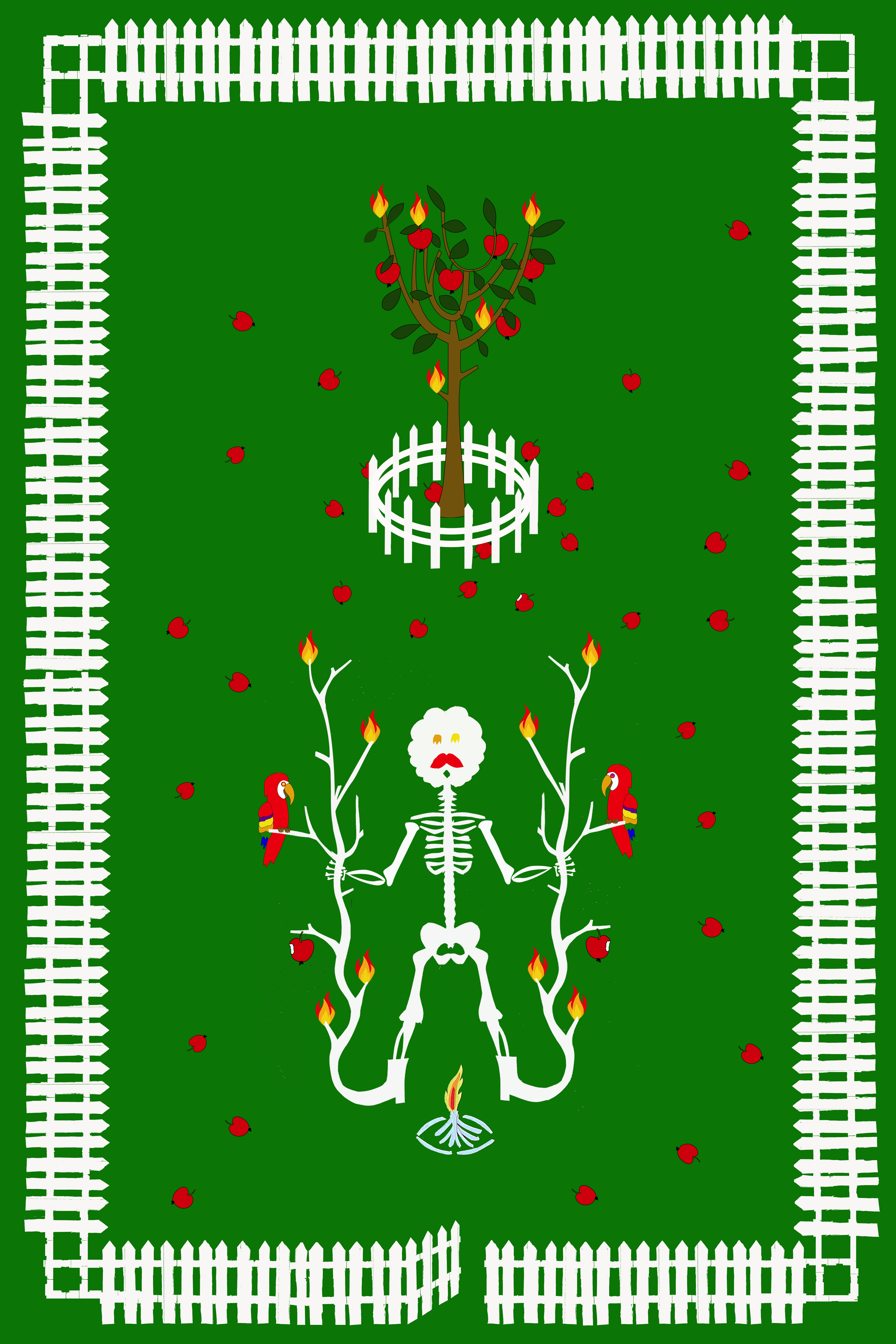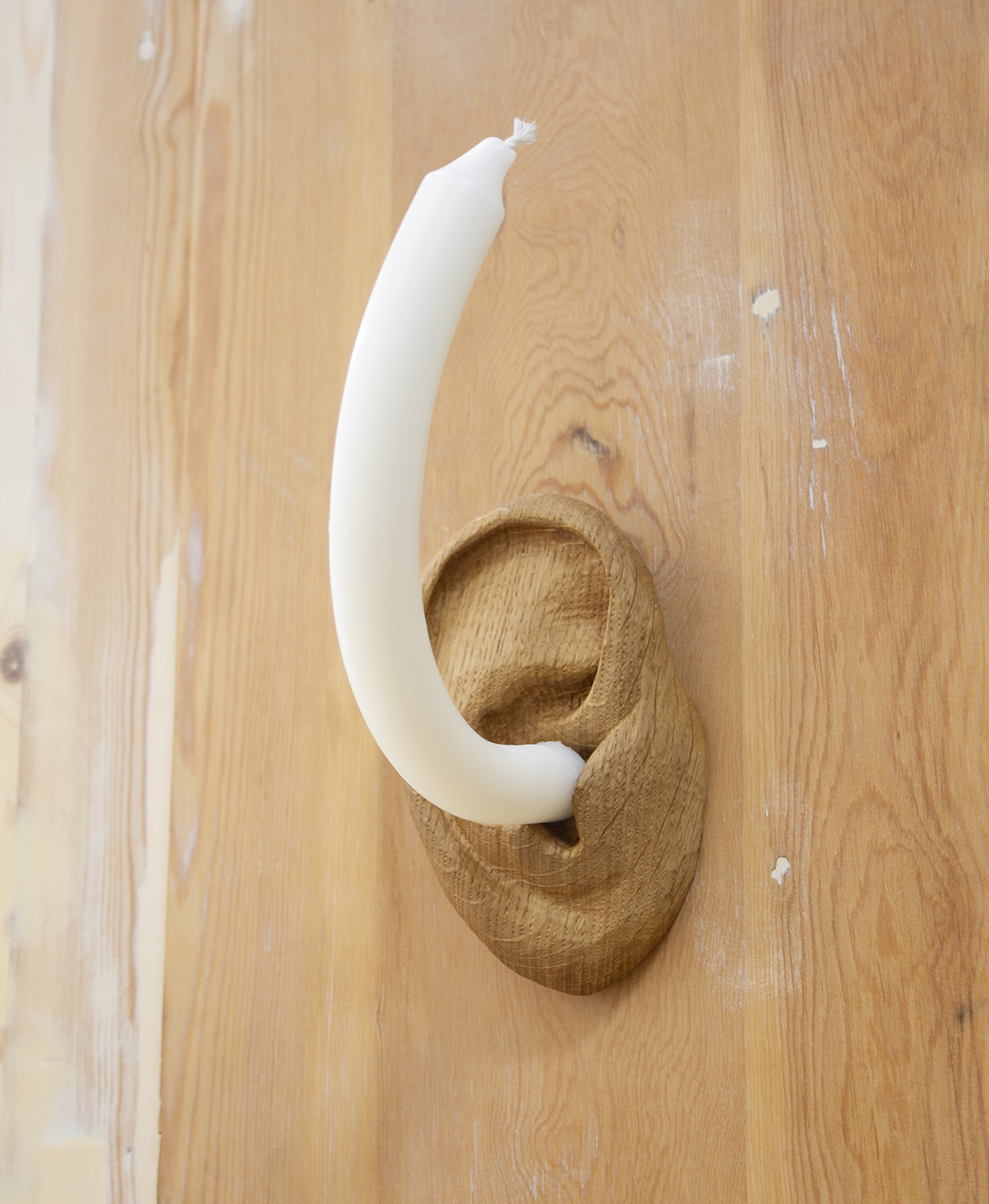Exhibited Works
Informations
Mike Bourscheid
Weeping Sand Castles
Opening: Thursday 12th September 2024, 17:00-21:00
in the presence of the artist
Solo show inaugurated during
RendezVous-Brussels Art Week
12.09.-15.09.2024
EN
The exhibition Weeping Sand Castles is built upon storytelling—whether referencing small village gossip, clichés of the horror genre, or exploring the contemporary resonance of myths and fairy tales. Literary allusions serve as the blueprint for Mike Bourscheid’s visual language. Like a familiar melody guiding a musical improvisation, motifs are deconstructed, intermittently coming to the forefront or fading into the background, ultimately forming a new composition.
One of the motifs explored in the exhibition is the story of the Sirens. In classical literature, the Sirens faced their predicament as punishment for something beyond their control. When Hades, the god of the underworld, kidnapped Persephone, the Sirens were transformed into half-bird creatures and tasked with searching for her. However, they could never fulfill their purpose, and their immortality, along with their bodies, became their curse. Hurt and lost, they would settle in the sea luring men to their demise with the promise of knowledge and pleasure in their songs. In Homer’s Odyssey, forewarned of the encounter, Odysseus orders his crew to plug their ears with beeswax, while he himself chooses to listen to the Sirens’ enchanting melodies, bound to the mast of his ship, desperate to break free from his bonds to meet them.
Although in the original tales the Sirens' songs seemed to appeal more to the spirit, promising to fulfill the deep longings of the men who encountered them, later interpretations increasingly suggest they evoked sexual desires. With the rise of the Catholic faith, their depictions transformed from birds with female heads to seductive female bodies with animalistic features, such as wings or fishtails. They became associated with sin, joining the array of dangerous women of biblical origin, with Eve foremost among them. Mike Bourscheid depicts Sirens in a series of wooden sculptures that blend mythological attributes with elements of Catholic iconography, incorporating candles, as well as animalistic and crucifix-like features into their bodies' composition. Meanwhile, the Sirens enter Eve’s garden in two large-scale textile works, where their paper cut-out bodies are intertwined with elements that further merge these two iconographic worlds – snakes, fishes, birds, flowers, bones, burning bushes and red apples, some bitten by hungry mouths.
The moralising nature of the Catholic tradition may be seen as a contributing factor to much of the shame, guilt, and sense of forbiddance that we experience regarding our (gendered) bodies. In his work, Mike Bourscheid explores the implications of the body – often his own – questioning various modes of embodiment. What can the (extended) body teach us? How do we inhabit a body that feels uncomfortable? And how can vulnerability be embodied? In the exhibition, a costume based on the hunter from the tale of Snow White is created using a pattern found in an old magazine. Dressed in sheer fabrics, the character appears unarmed, vulnerable and transparent, in contrast to the way he was depicted in the original literary source.
The artist’s name, Bourscheid – translating to a castle built on a river split – serves as a pun that permeates Weeping Sand Castles. On the lower level of the gallery, an interior of a castle is created. Barred windows on the walls enclose the screams of foul mouths, while the ground contains a small town of stained-glass homes that house plants, each a character in itself. This setup highlights the mouth and the throat, and their connection not only to breath, thus to life, but also to language – which functions quite like the body does. Just as we exist in the body, we also exist within language, which structures our sense of self in the symbolic order. Both the body and language are sites of pleasure and pain, both enable and constrain us, and both are key to understanding the ways we are embodied and enmeshed in the fabric of our existence.
Anna Laganovska
---
FR
L’exposition Weeping Sand Castles est basée sur la narration – qu’il s’agisse de ragots de village, de récits d’horreur stéréotypés ou d’expressions contemporaines de mythes et de contes de fées. Le langage visuel de Mike Bourscheid se nourrit en effet de références littéraires. Comme dans une improvisation musicale où une mélodie familière surgit et s’efface tour à tour, les motifs qu’il invoque sont déconstruits et reconstruits de manière à former une nouvelle composition.
L’un de ces motifs est celui des sirènes. Dans la mythologie classique, ces créatures fantastiques sont punies pour une situation qui échappe à leur emprise. Lorsque Hadès, le dieu des enfers, enlève Perséphone, elles sont chargées de la retrouver, mais échouent. Transformées en femmes-oiseaux, elles s’installent au bord d’un rivage, où elles mènent les navigateurs à leur perte par leur chant envoûtant. Dans l’Odyssée d’Homère, Ulysse, prévenu de leur pouvoir, ordonne à son équipage de se boucher les oreilles avec de la cire d’abeille. Lui-même se fait attacher au mât du navire pour pouvoir les écouter sans se précipiter vers elle malgré la tentation.
Si, dans les mythes originaux, les chants des sirènes semblent s’adresser davantage à l’esprit, promettant de combler les désirs profonds des hommes qui les rencontrent, les interprétations ultérieures mettent l’accent sur le désir sexuel. Avec l’essor du catholicisme, les représentations changent : d’oiseaux à tête de femme elles évoluent vers des corps féminins séduisants aux caractéristiques animales, telles que des ailes ou des queues de poisson. Elles sont alors associées au péché, rejoignant ainsi le groupe des femmes dangereuses d’origine biblique, au premier rang desquelles figure Ève.
Mike Bourscheid représente les sirènes dans une série de sculptures en bois mêlant attributs mythologiques et éléments de l’iconographie catholique, en intégrant notamment des cierges et des crucifix dans la composition de leurs corps. Parallèlement, les sirènes entrent dans le jardin d’Ève dans deux grandes œuvres textiles, où leurs corps en papier découpé sont entrelacés avec des éléments qui accentuent la fusion de ces deux mondes iconographiques : serpents, poissons, oiseaux, fleurs, os, buissons ardents et pommes rouges, certaines croquées par des bouches affamées.
L’essence moralisatrice de la tradition catholique contribue sans doute aux sentiments de honte, de culpabilité et d’interdit que nous éprouvons à l’égard de nos corps (genrés). Dans son travail, Mike Bourscheid explore les implications du corps – souvent le sien – en interrogeant différents modes d’incarnation. Que nous apprend le corps (augmenté) ? Comment habiter un corps dans lequel on se sent mal à l’aise ? Et comment incarner la vulnérabilité ? Dans l’exposition figure ainsi un costume inspiré du chasseur dans le conte de Blanche-Neige, créé à partir d’un patron trouvé dans un vieux magazine. Vêtu de bouts de tissus diaphanes, le personnage apparaît désarmé, vulnérable et transparent, contrairement à la manière dont il est dépeint dans la source littéraire.
L’exposition toute entière est une sorte de calembour autour du nom de famille de l’artiste, qui signifie « château construit sur embranchement de rivière ». Au rez-de-chaussée, le spectateur entre dans l’intérieur d’un château, où des fenêtres à barreaux sur les murs retiennent les cris qui s’échappent de bouches immondes. Le sous-sol accueille quant à lui une agglomération de maisons en vitrail où vivent des plantes, dont chacune est un personnage en soi. La mise en scène met en exergue la bouche et la gorge, et ce qui les relie non seulement à la respiration, et donc à la vie, mais au langage, qui fonctionne de manière similaire au corps. De la même manière que nous existons dans notre corps, nous existons dans le langage, qui structure notre identité dans l’ordre symbolique. Le corps et le langage sont des lieux de plaisir et de douleur qui rendent possible et contraignent en même temps. Tous deux sont essentiels pour comprendre la manière dont nous sommes incarnés et enchevêtrés dans le tissu de notre existence.
Anna Laganovska
Traduction française: Patrick (Boris) Kremer
Photos: © Audrey Jonchères | Nosbaum Reding
